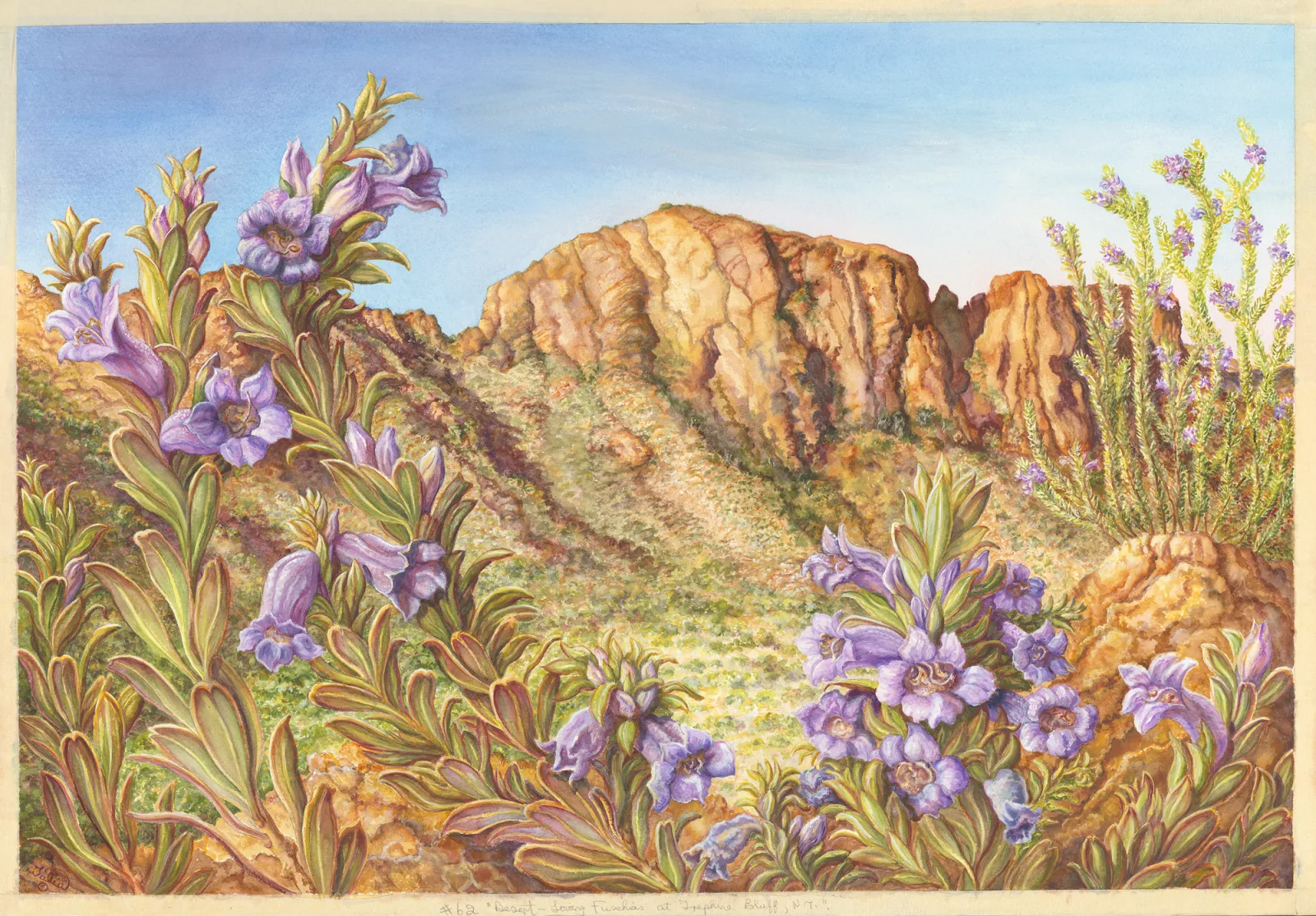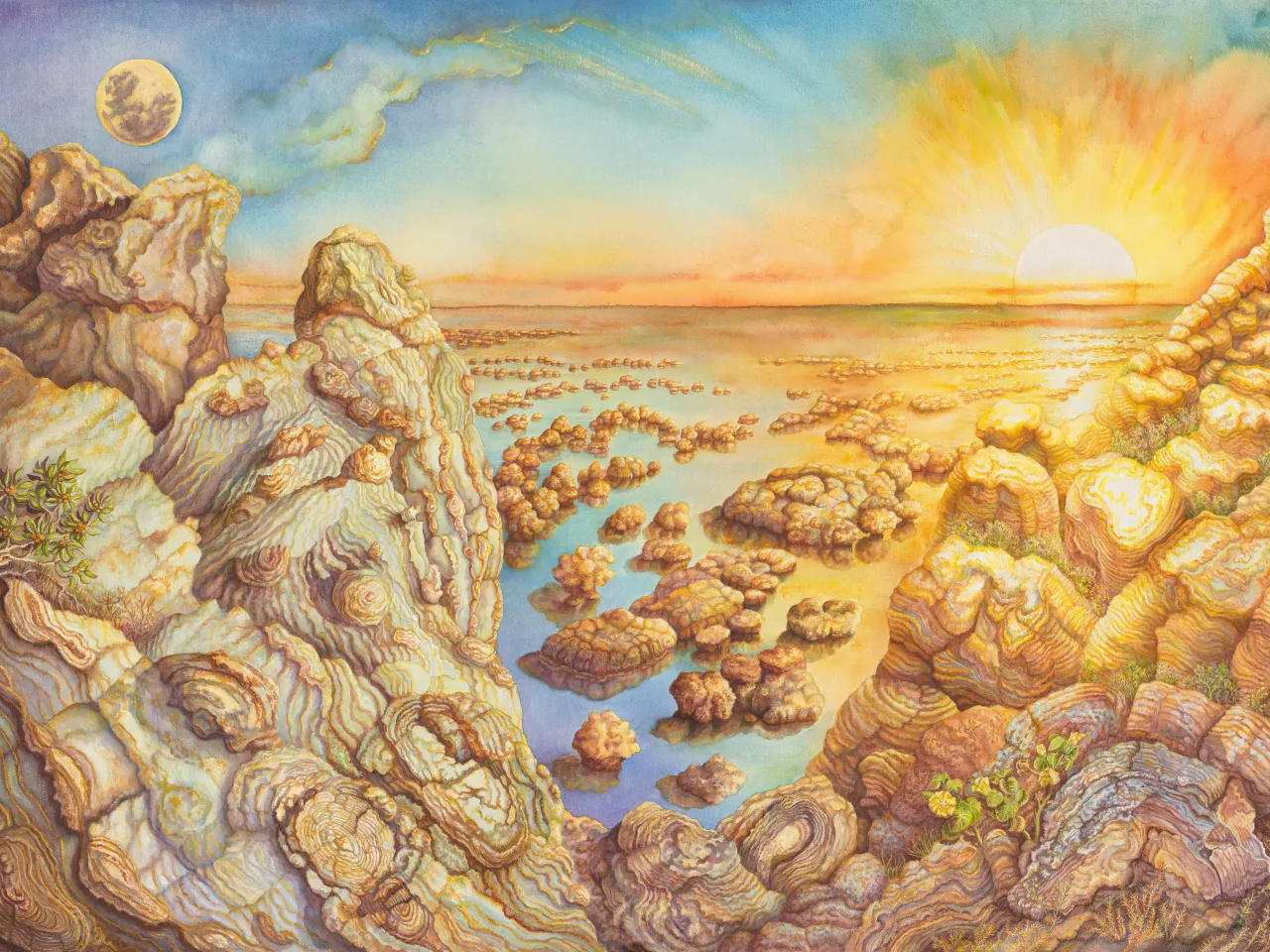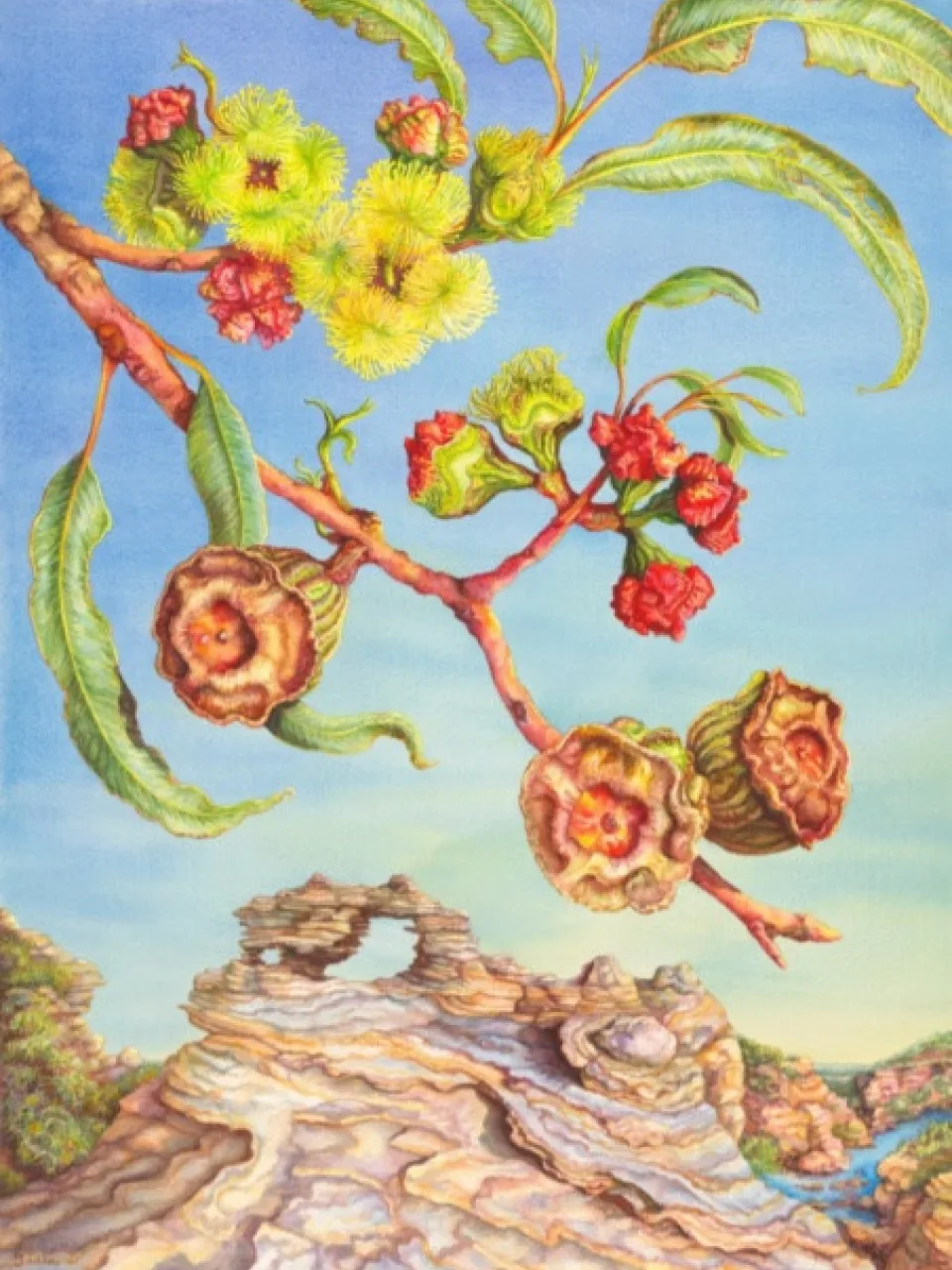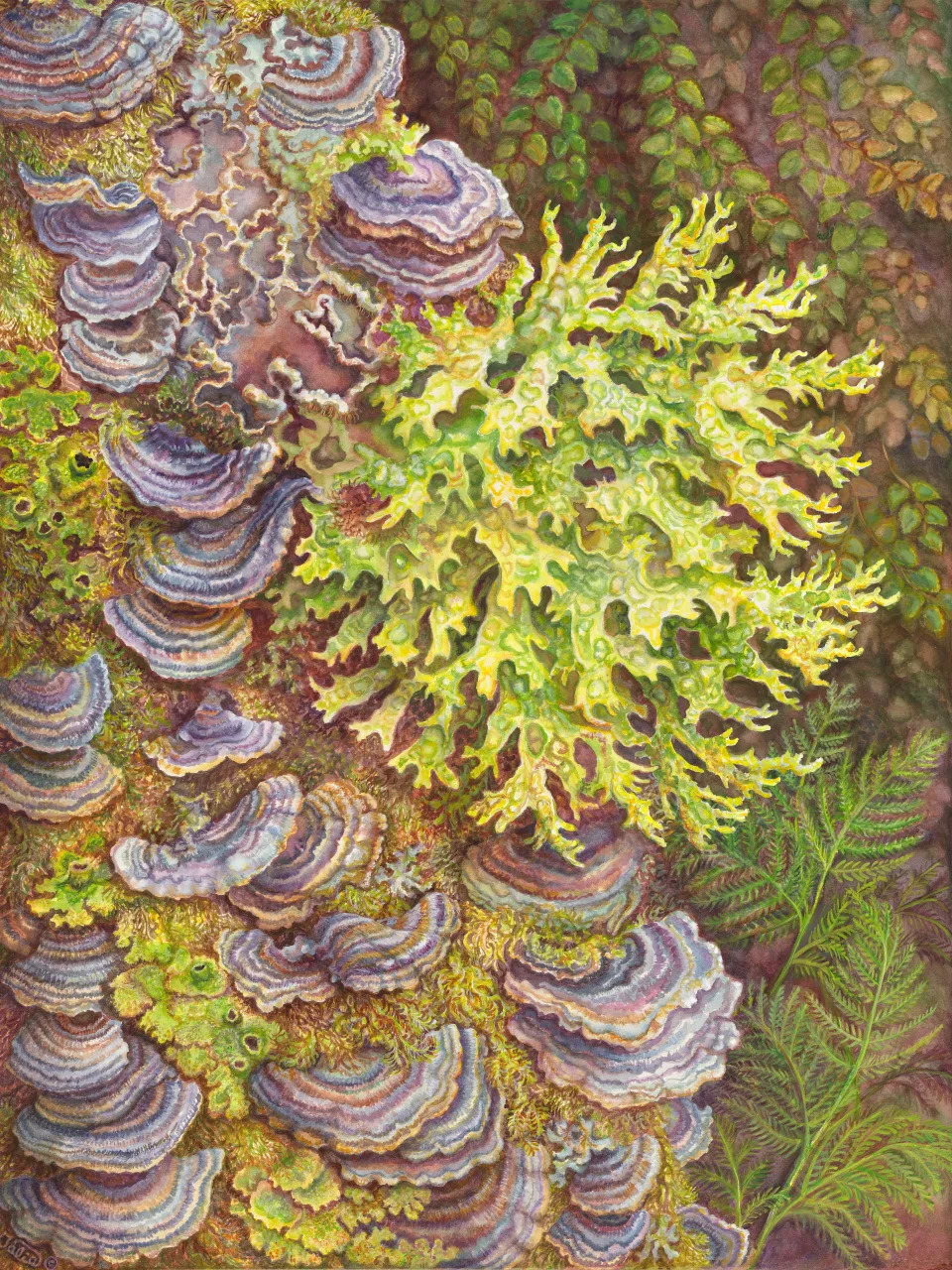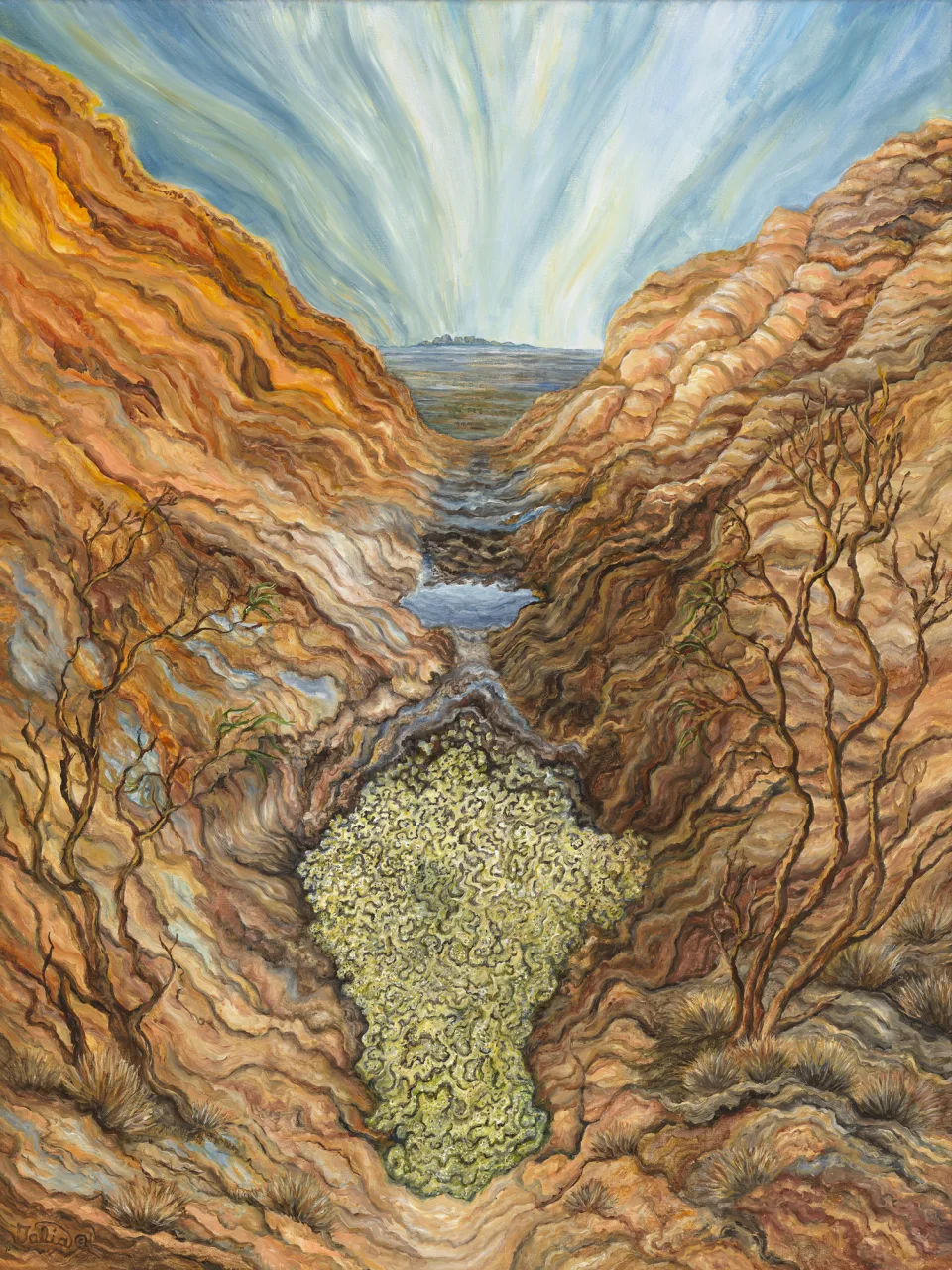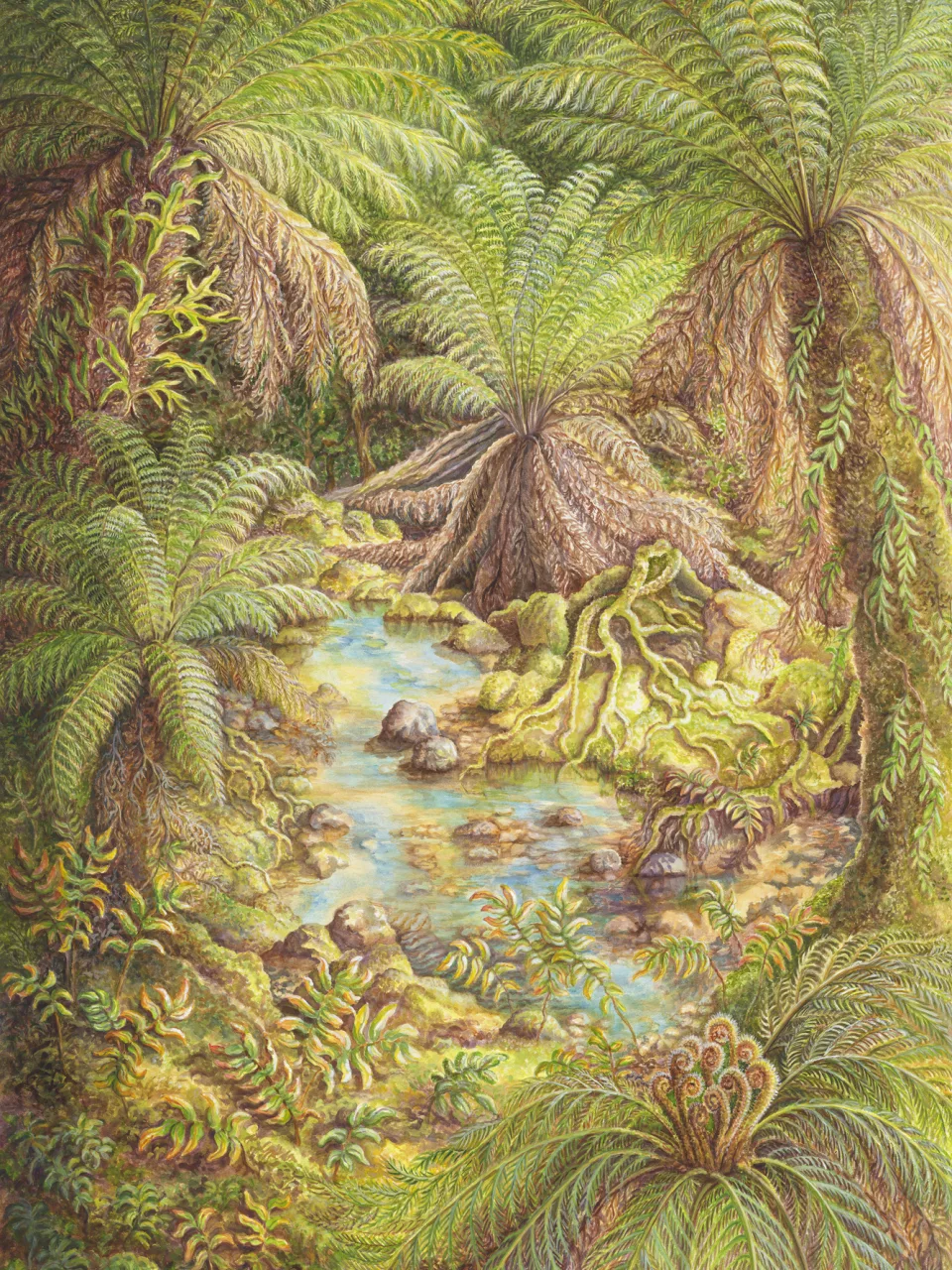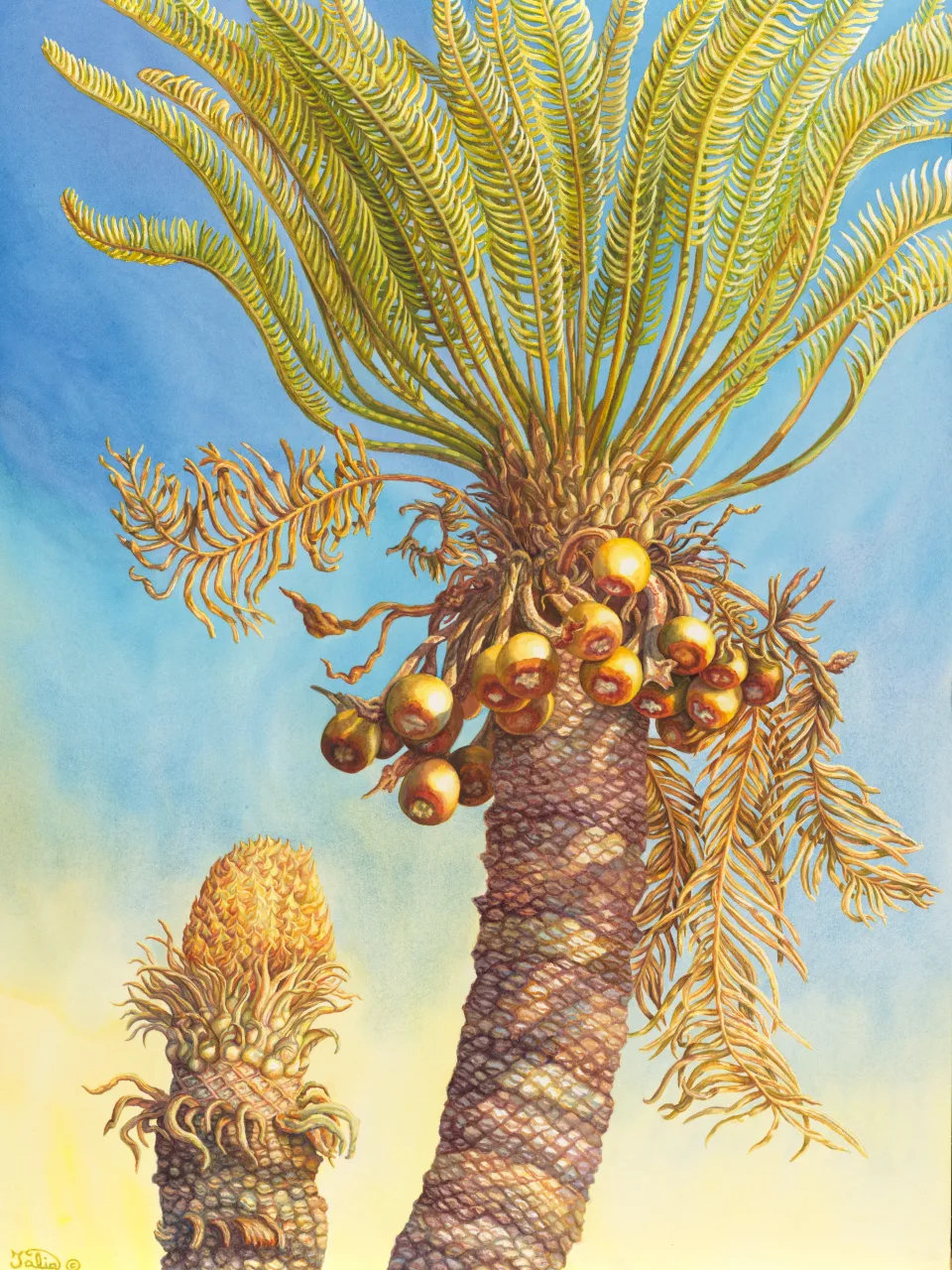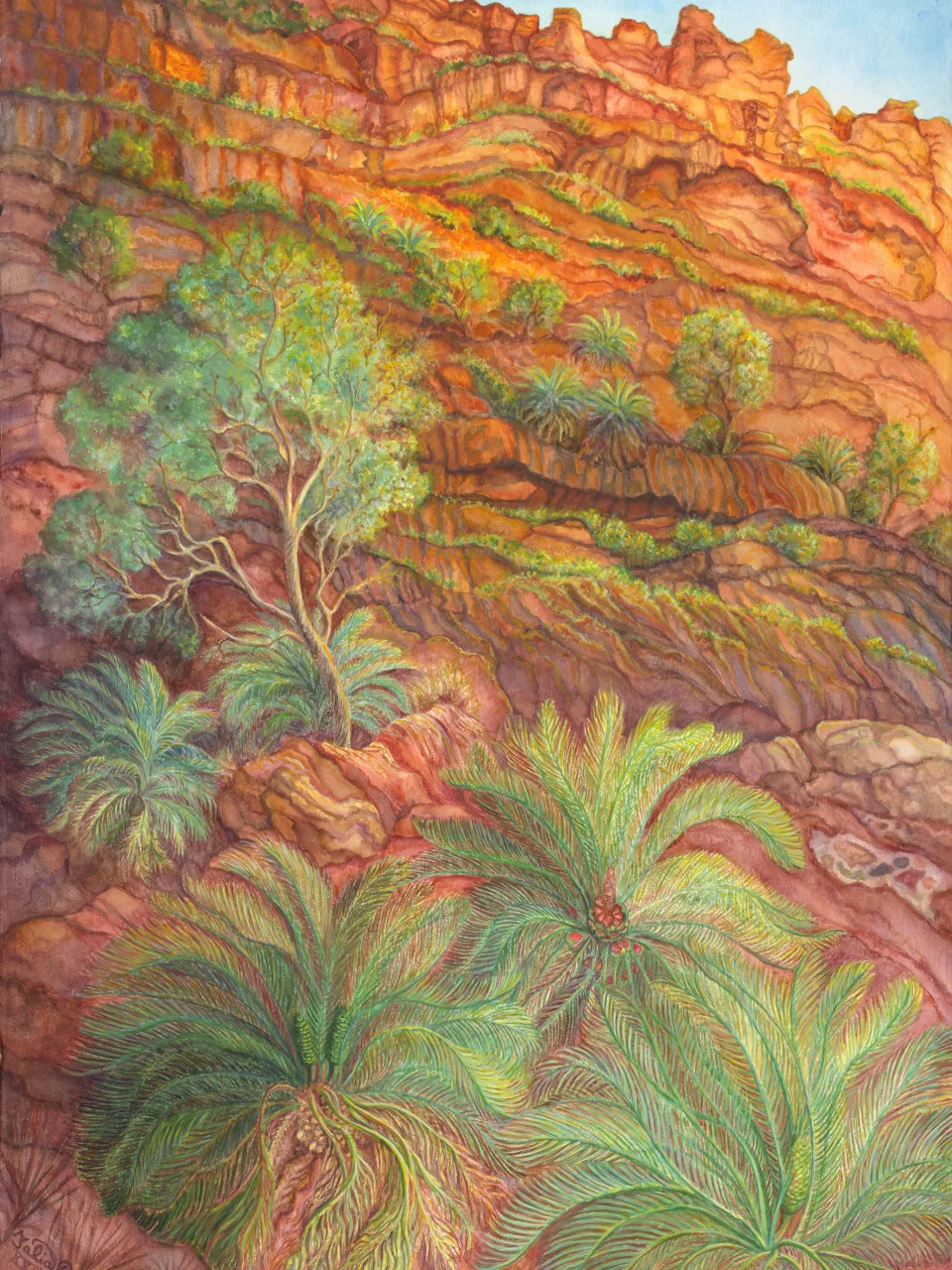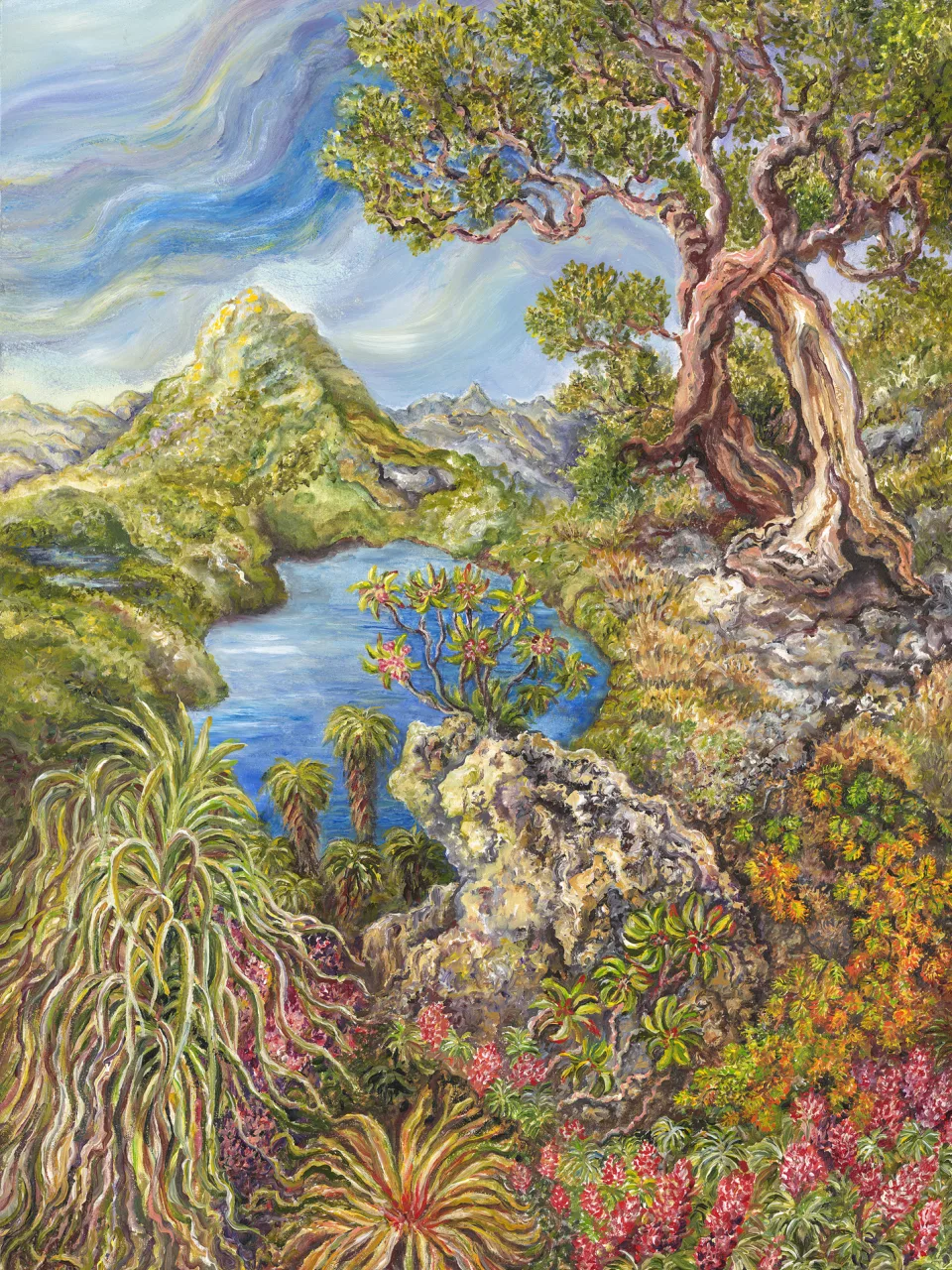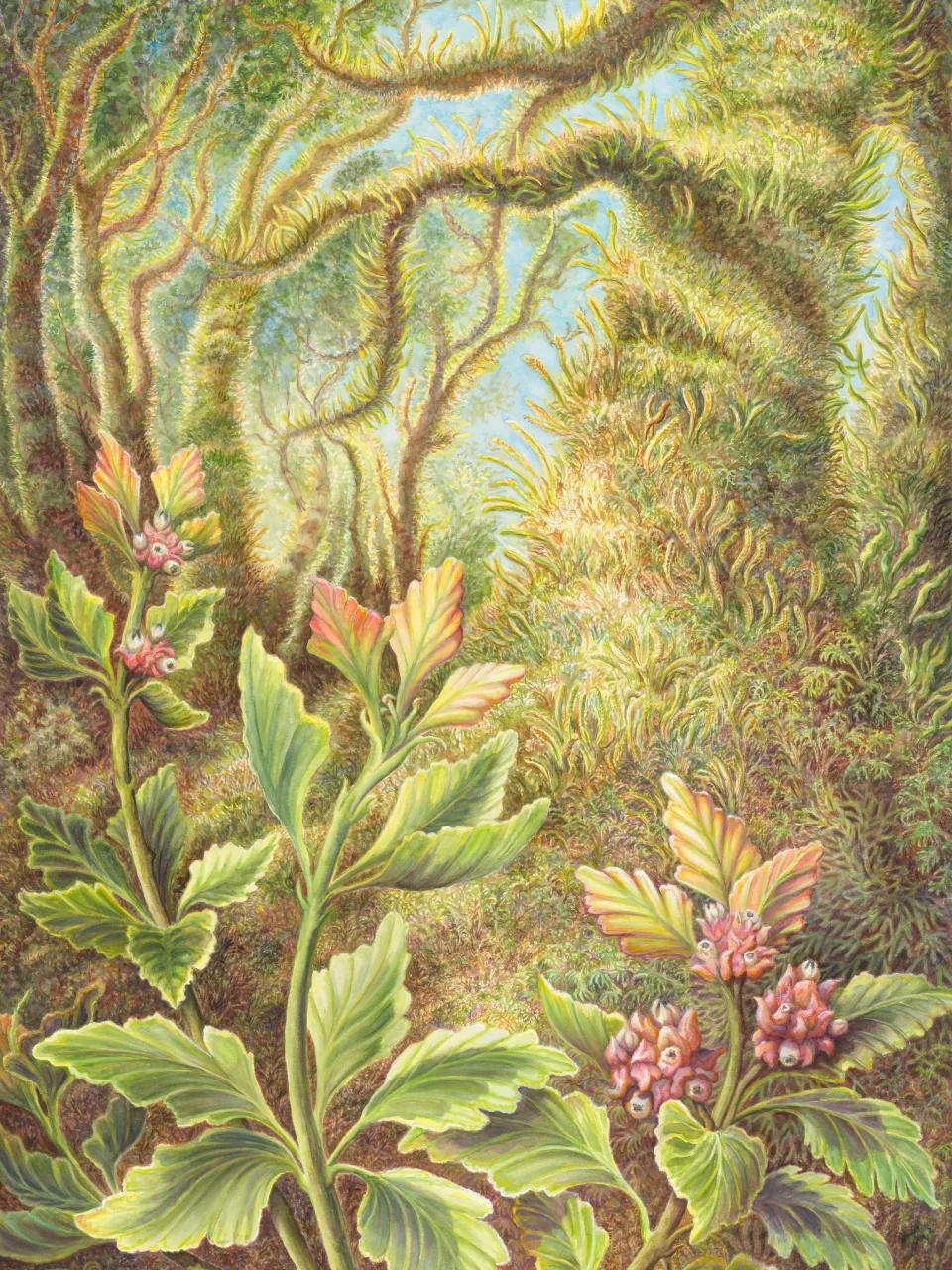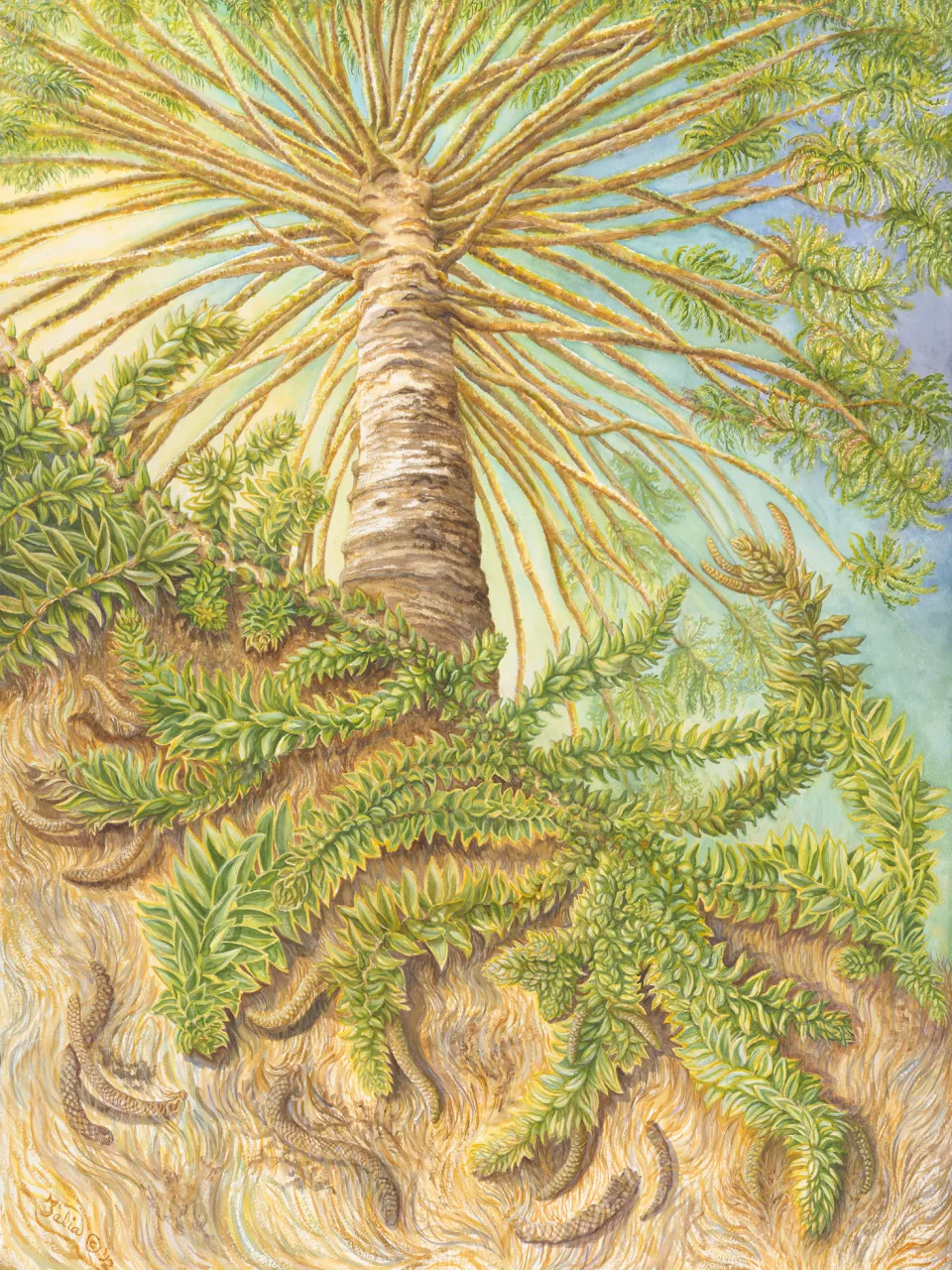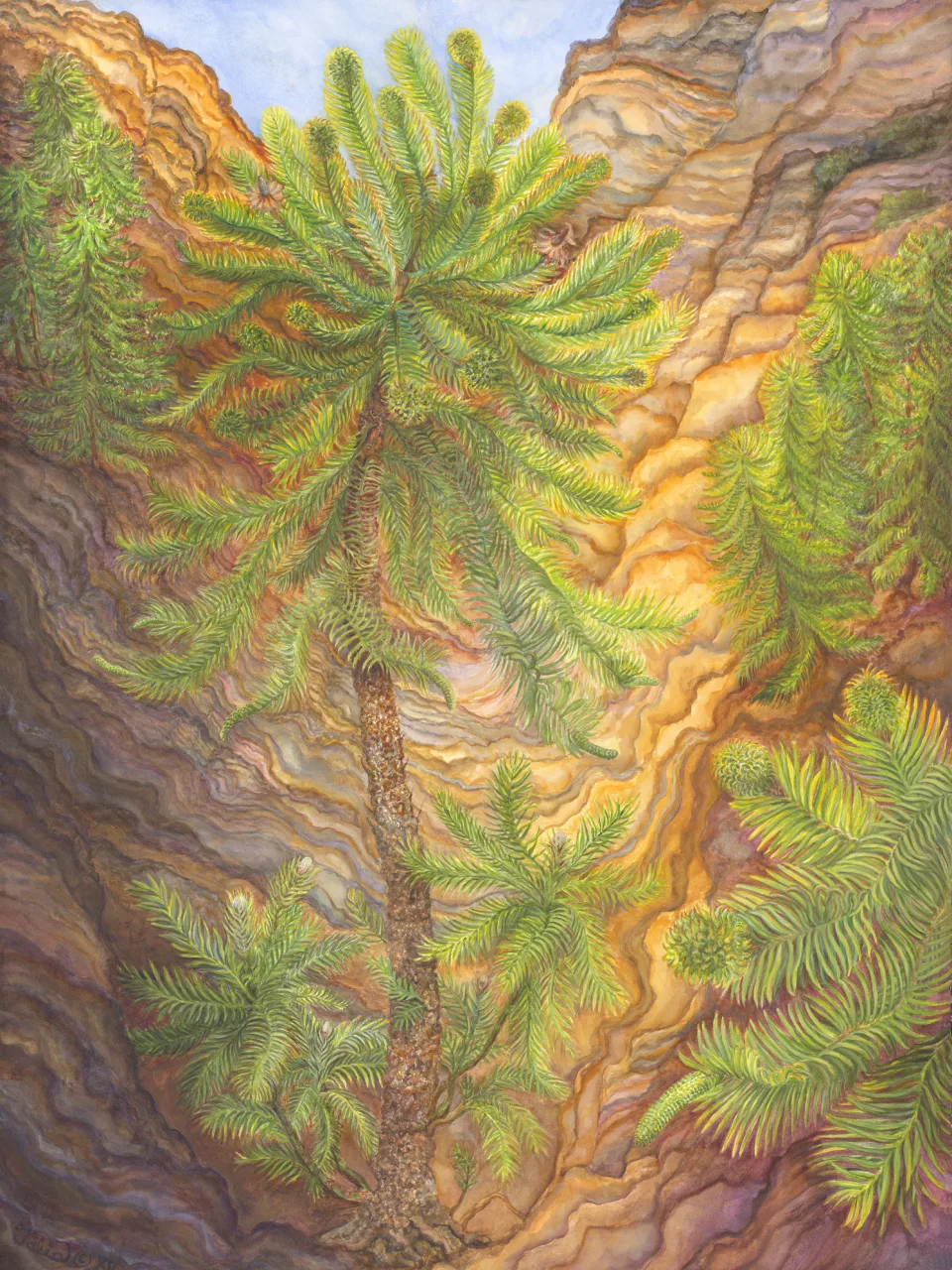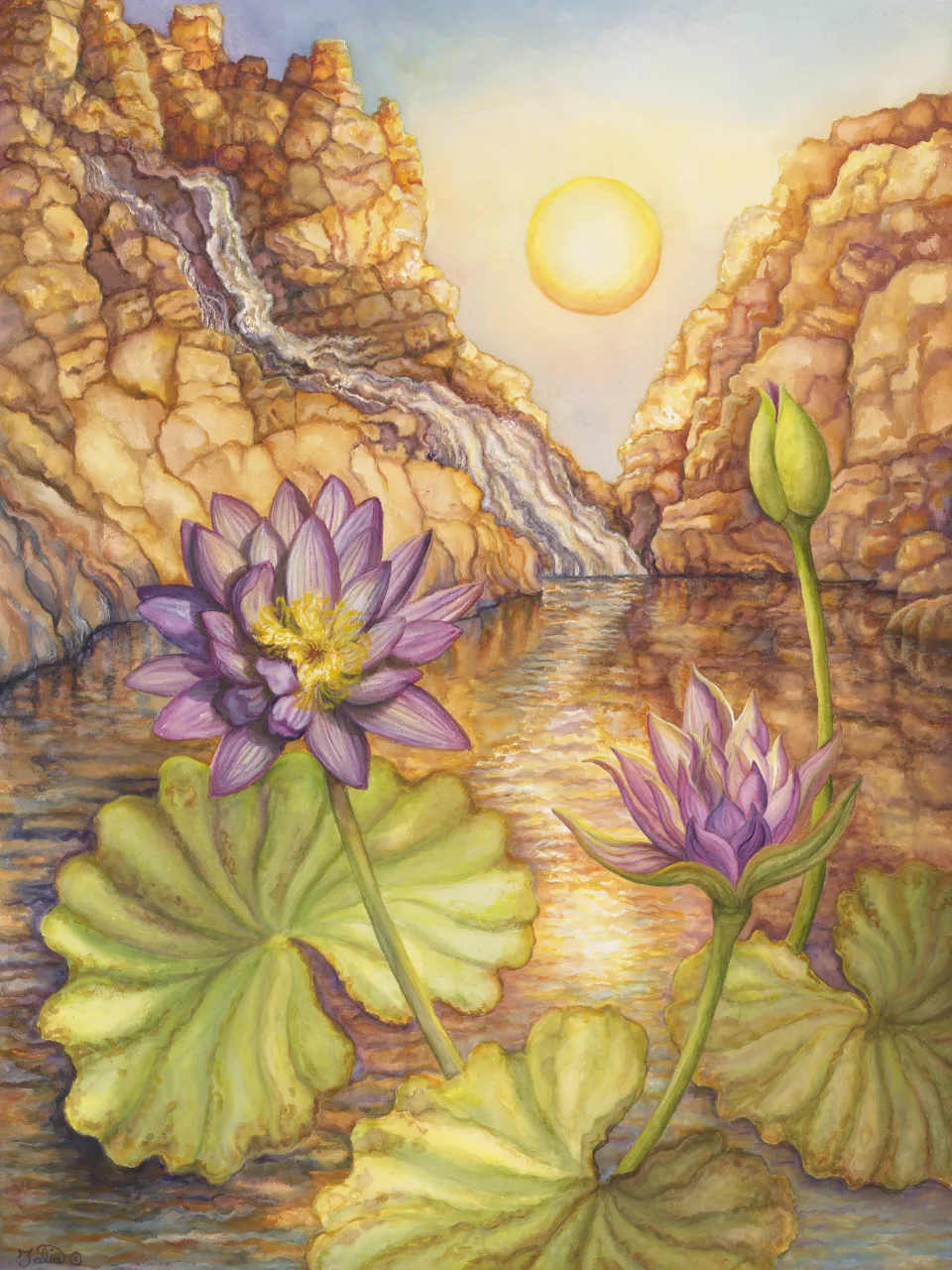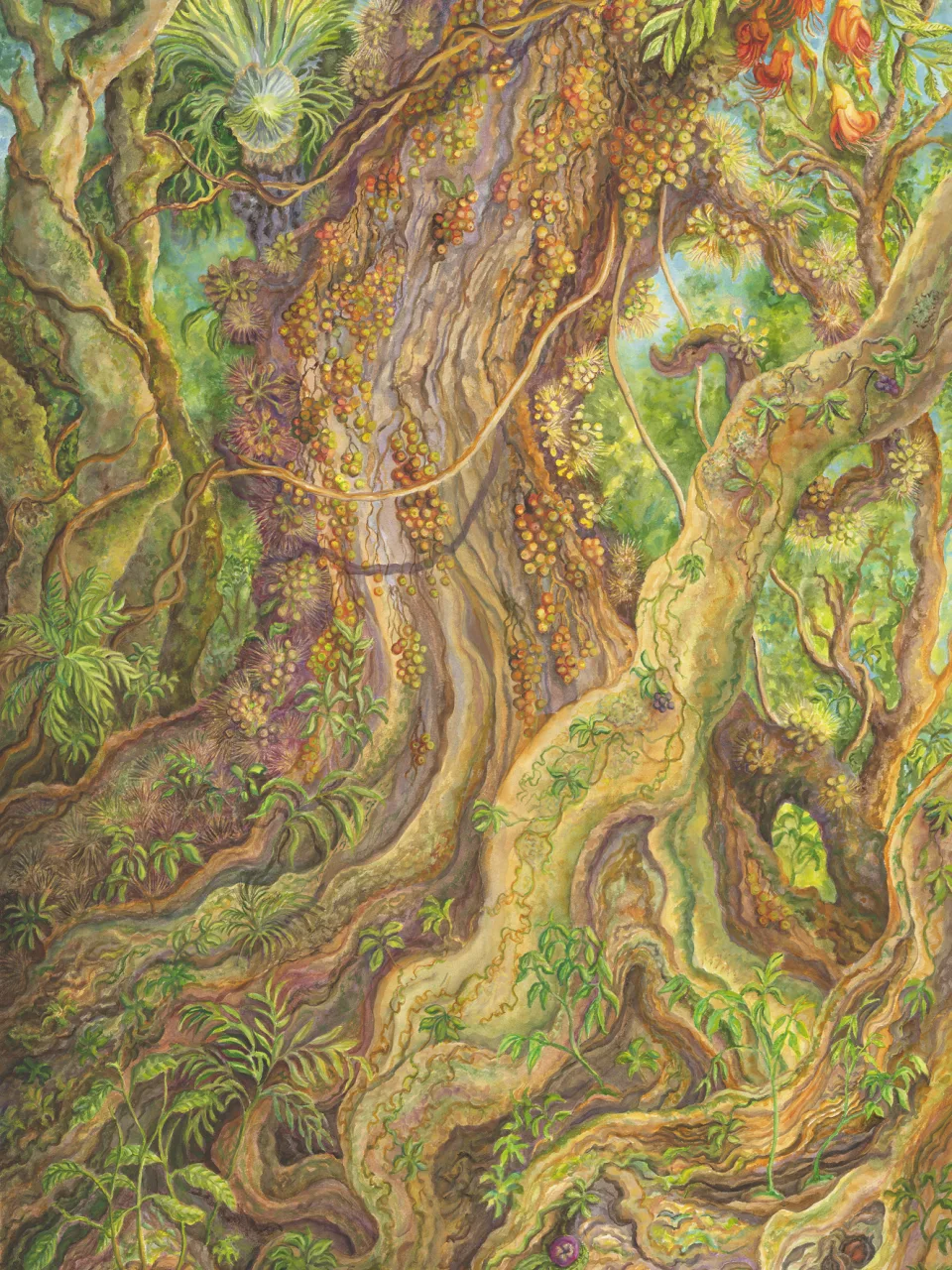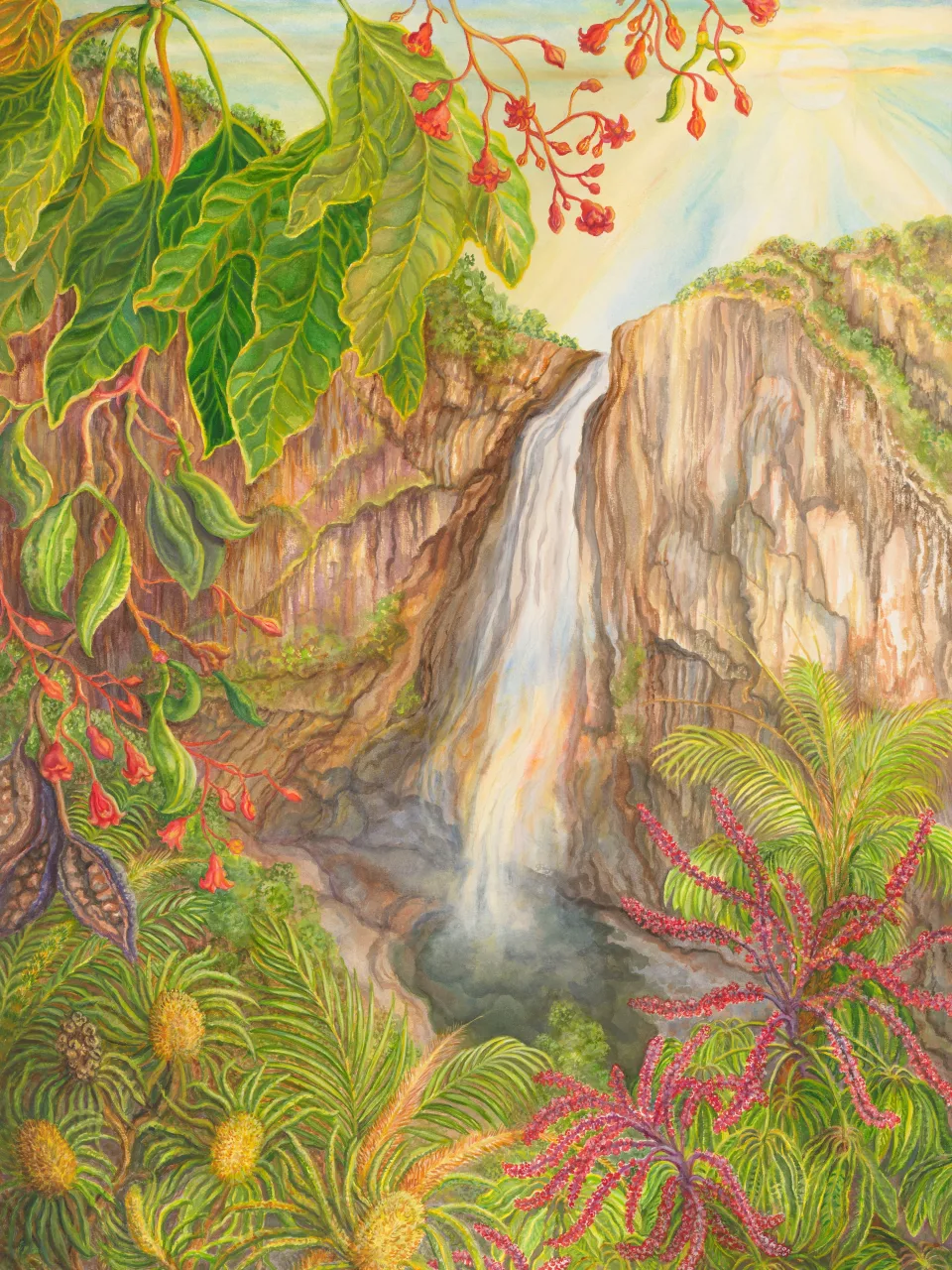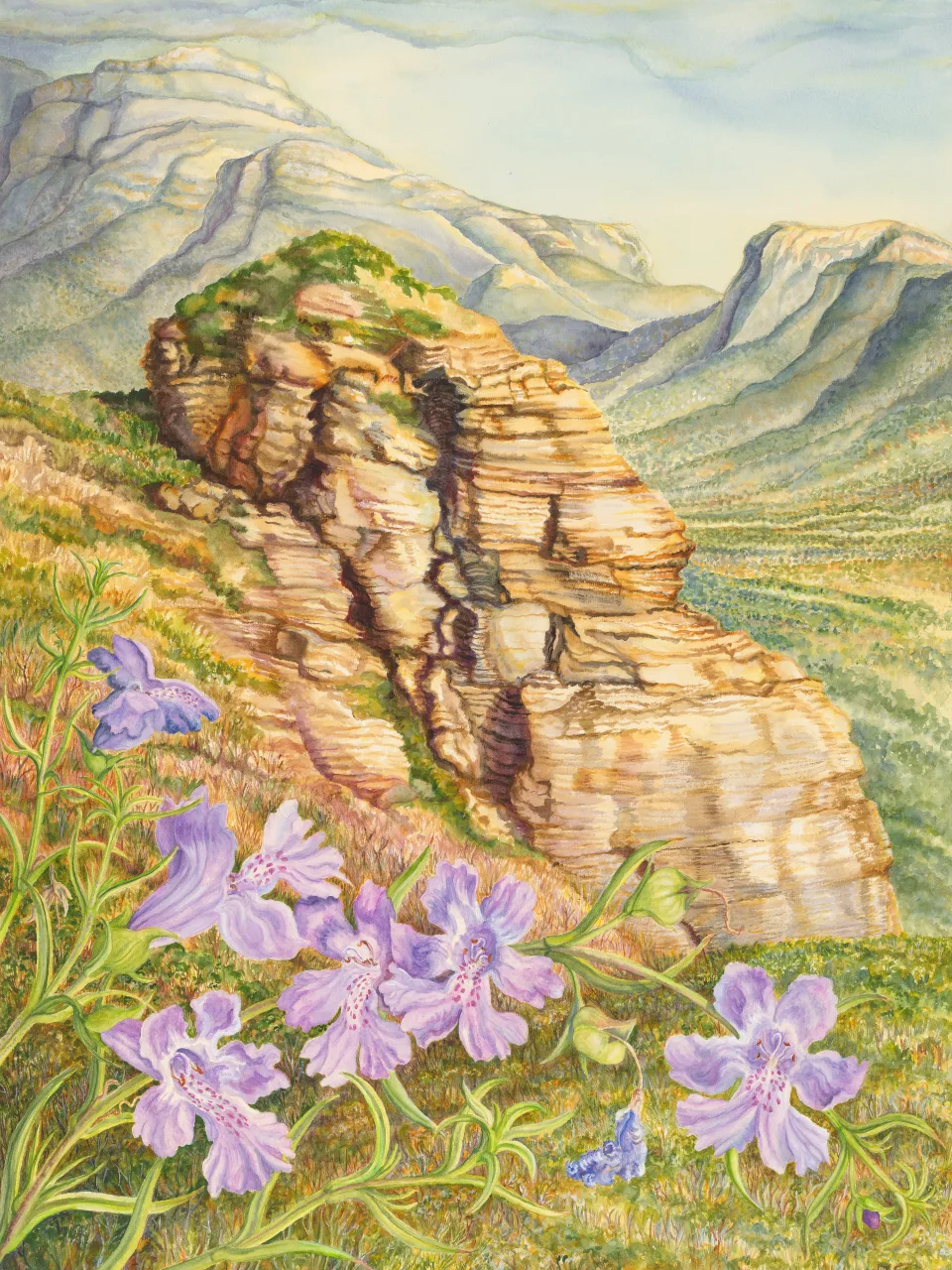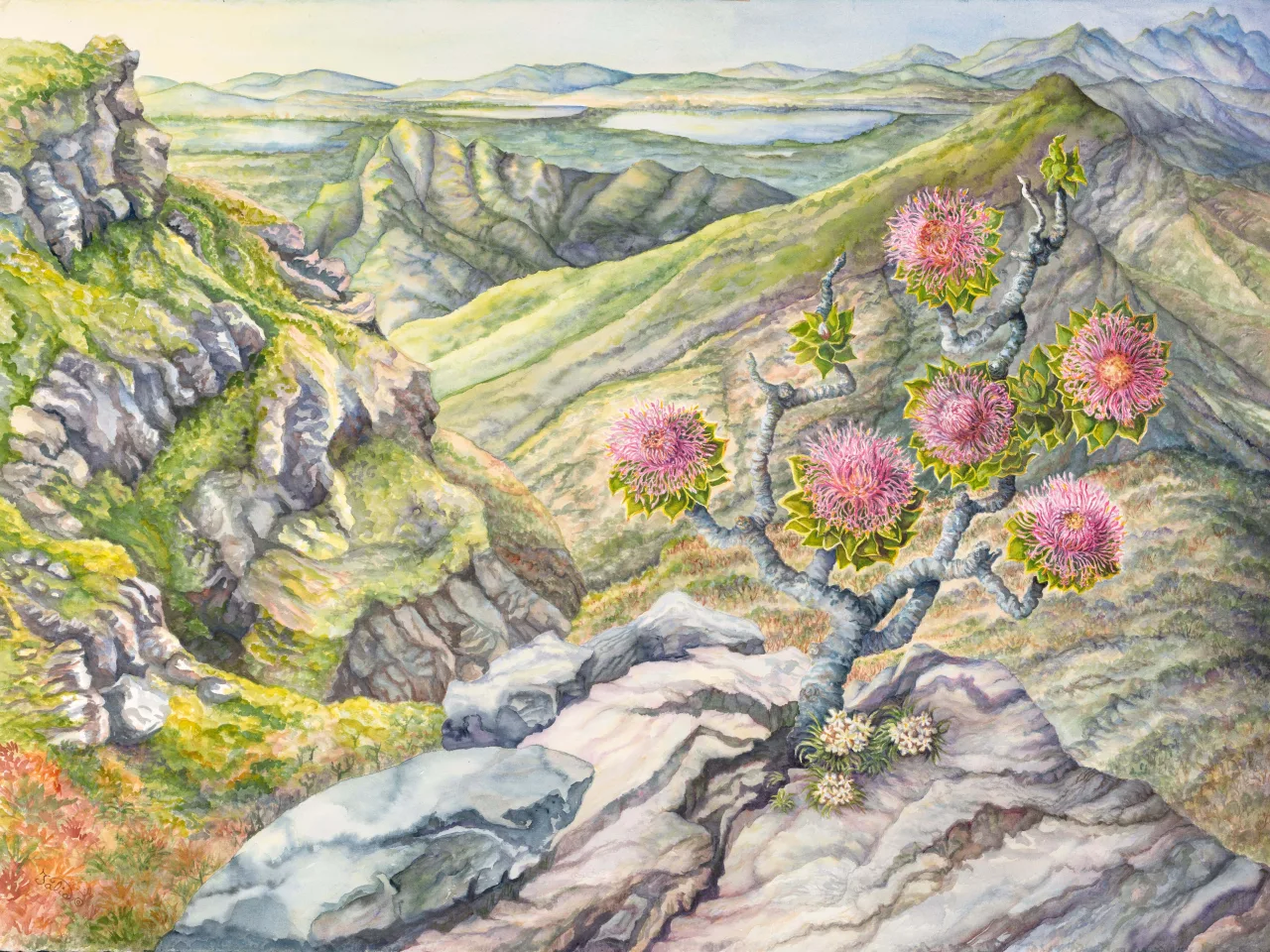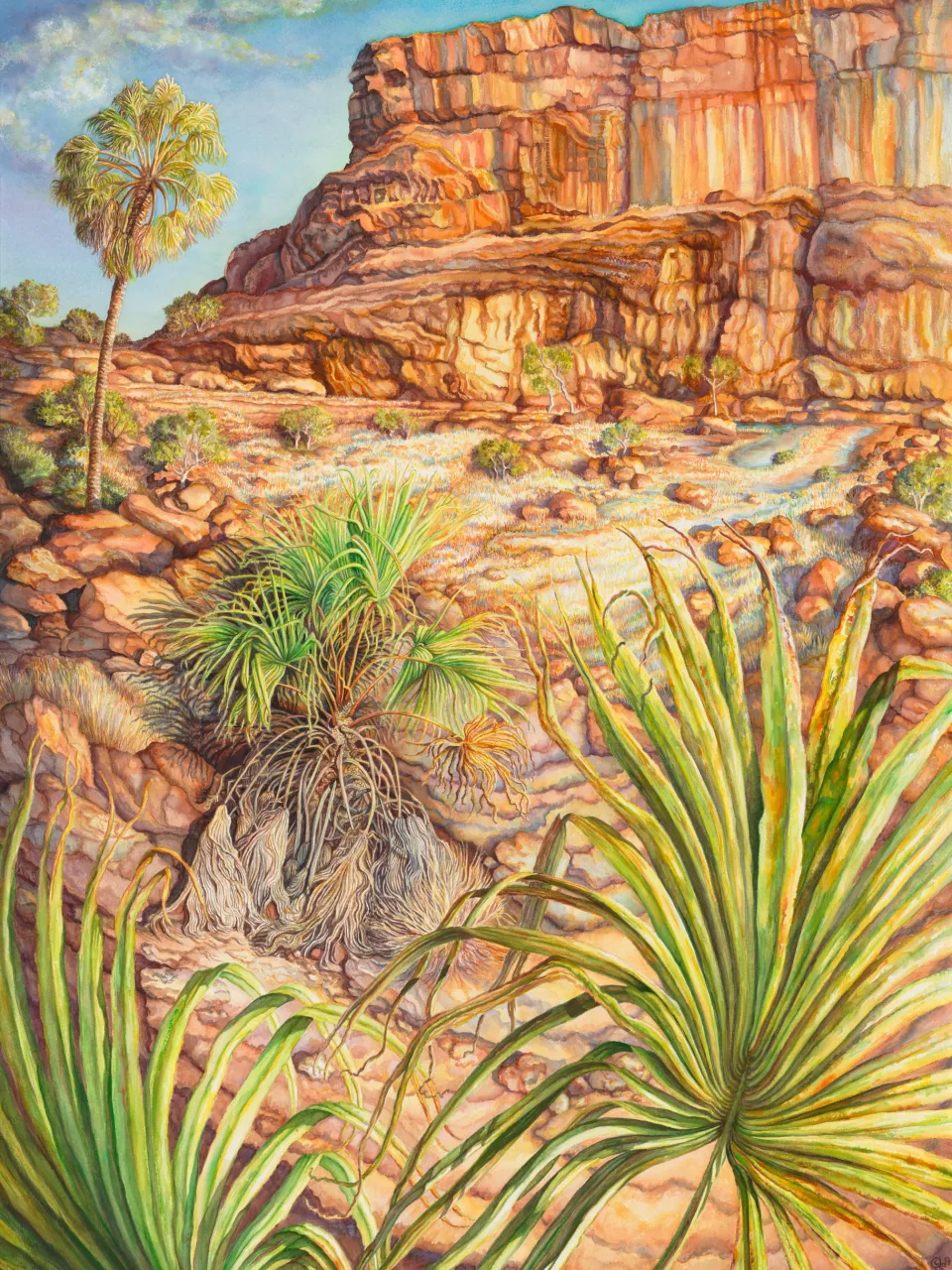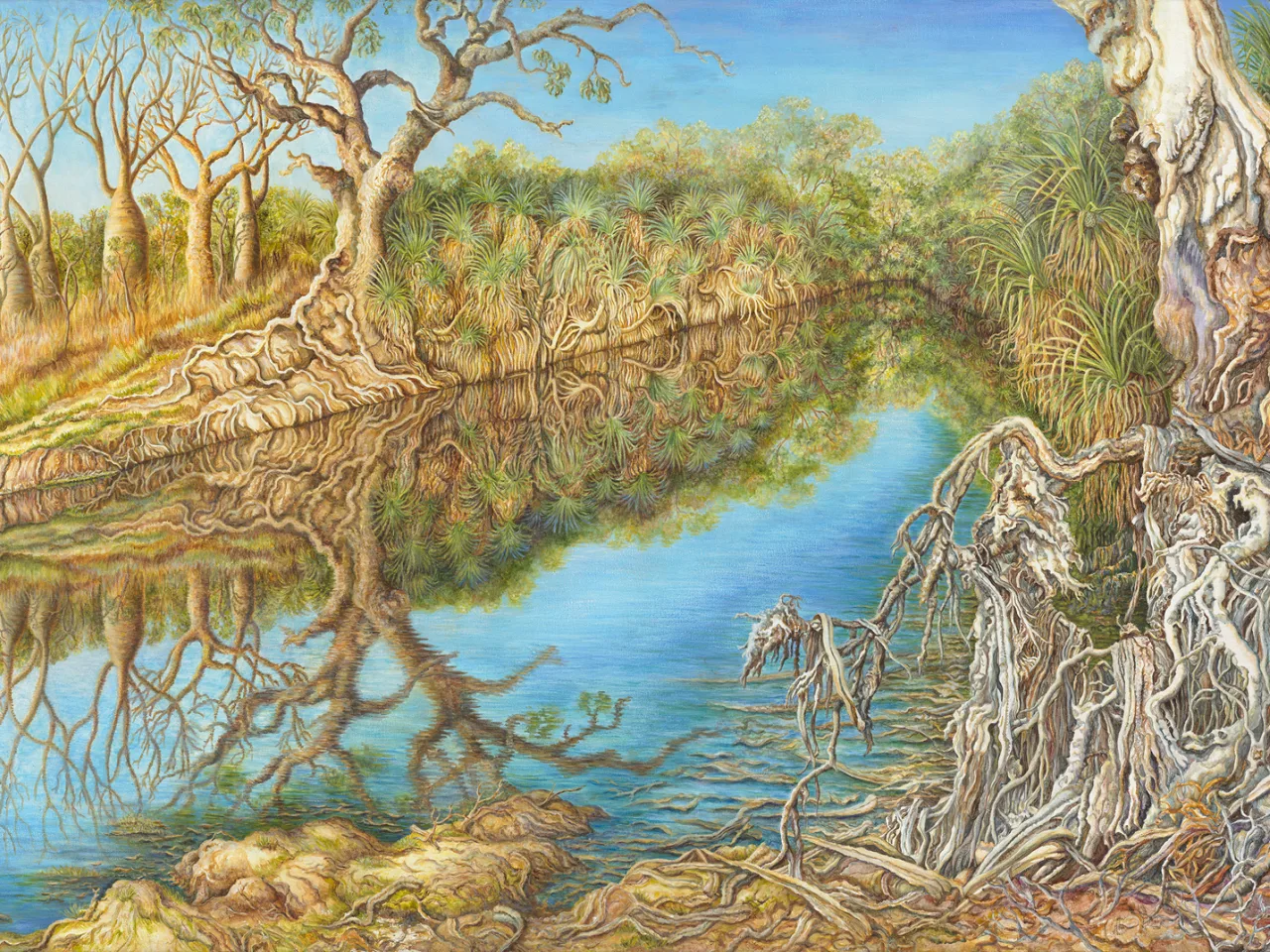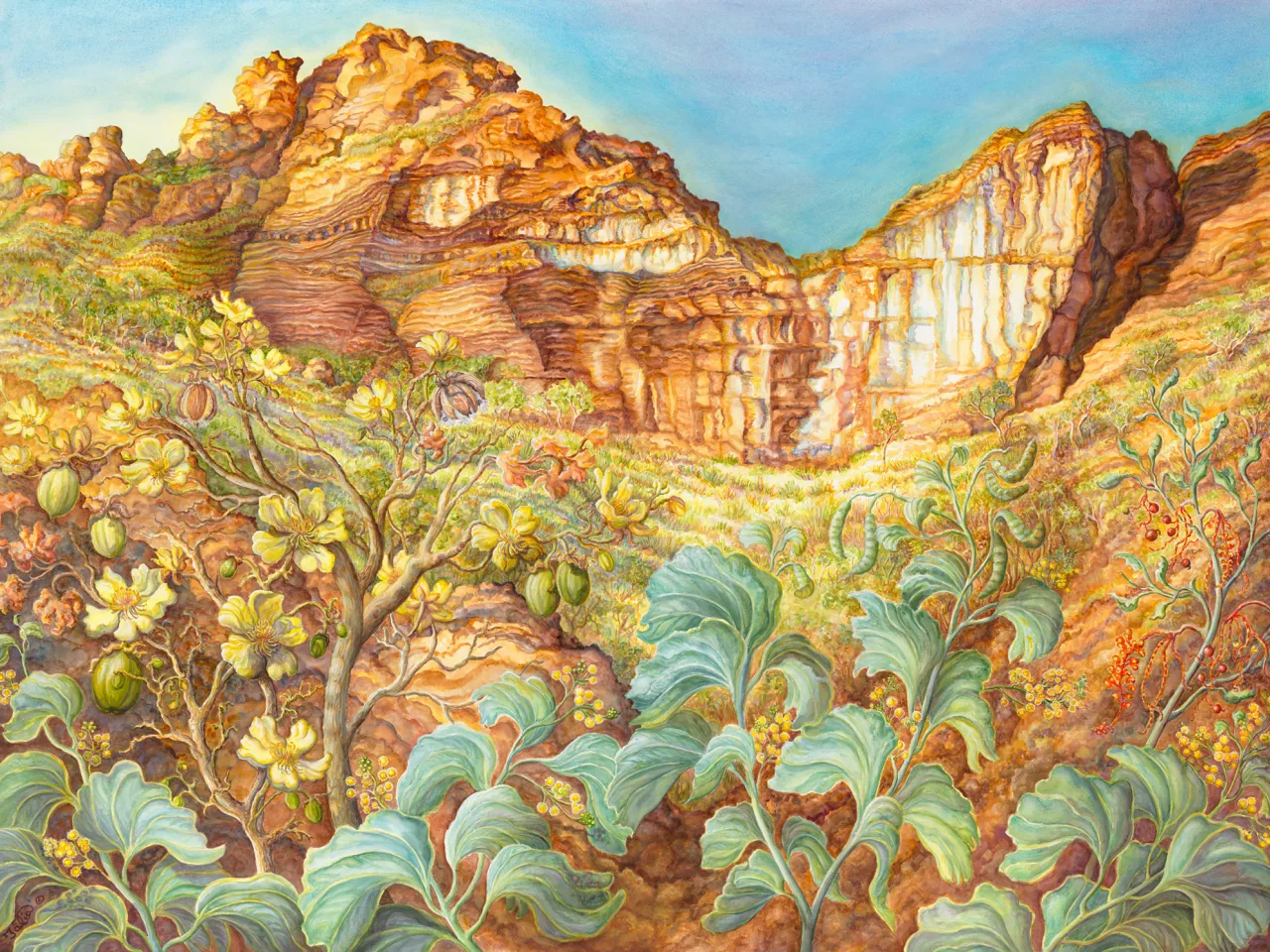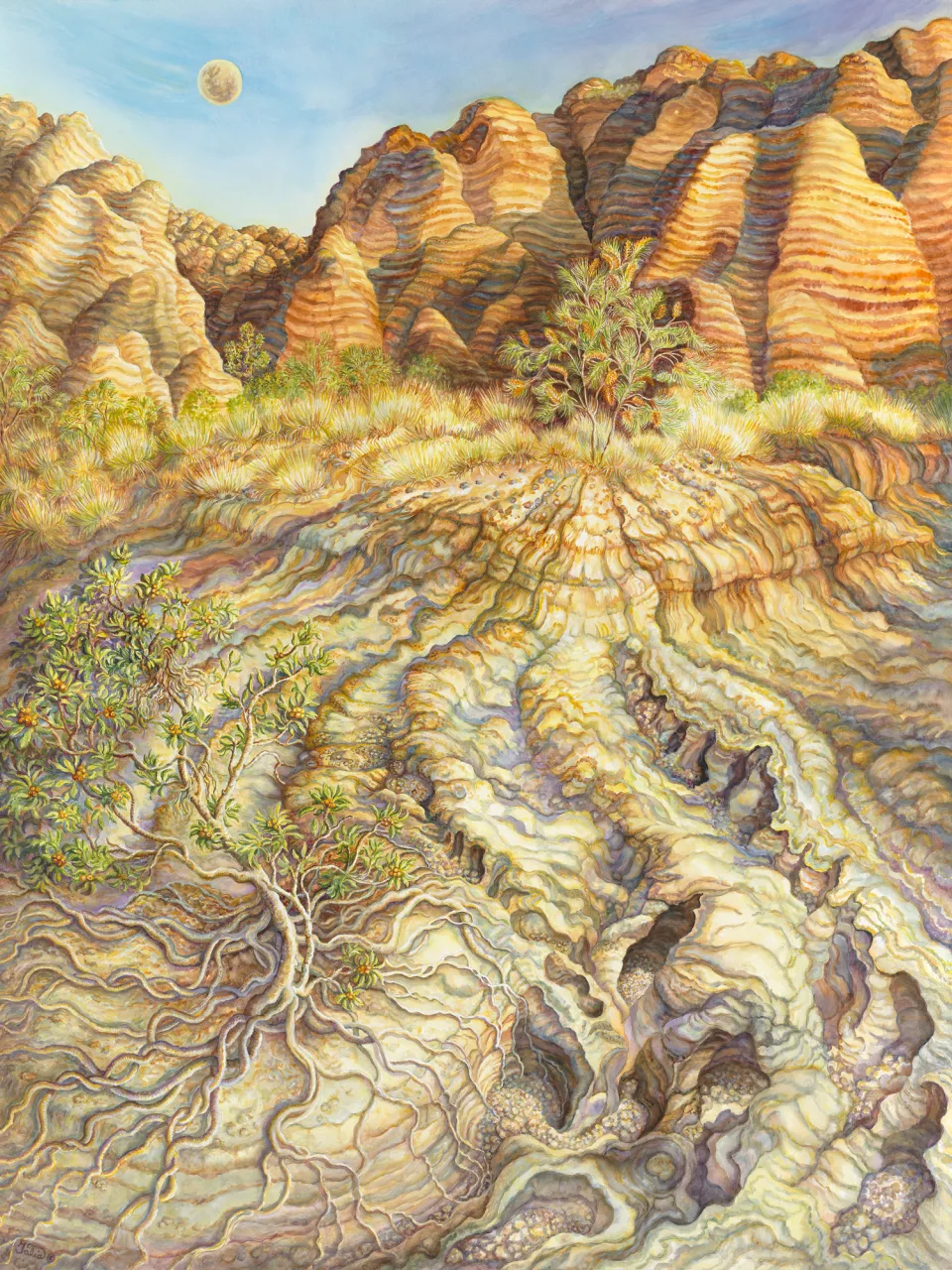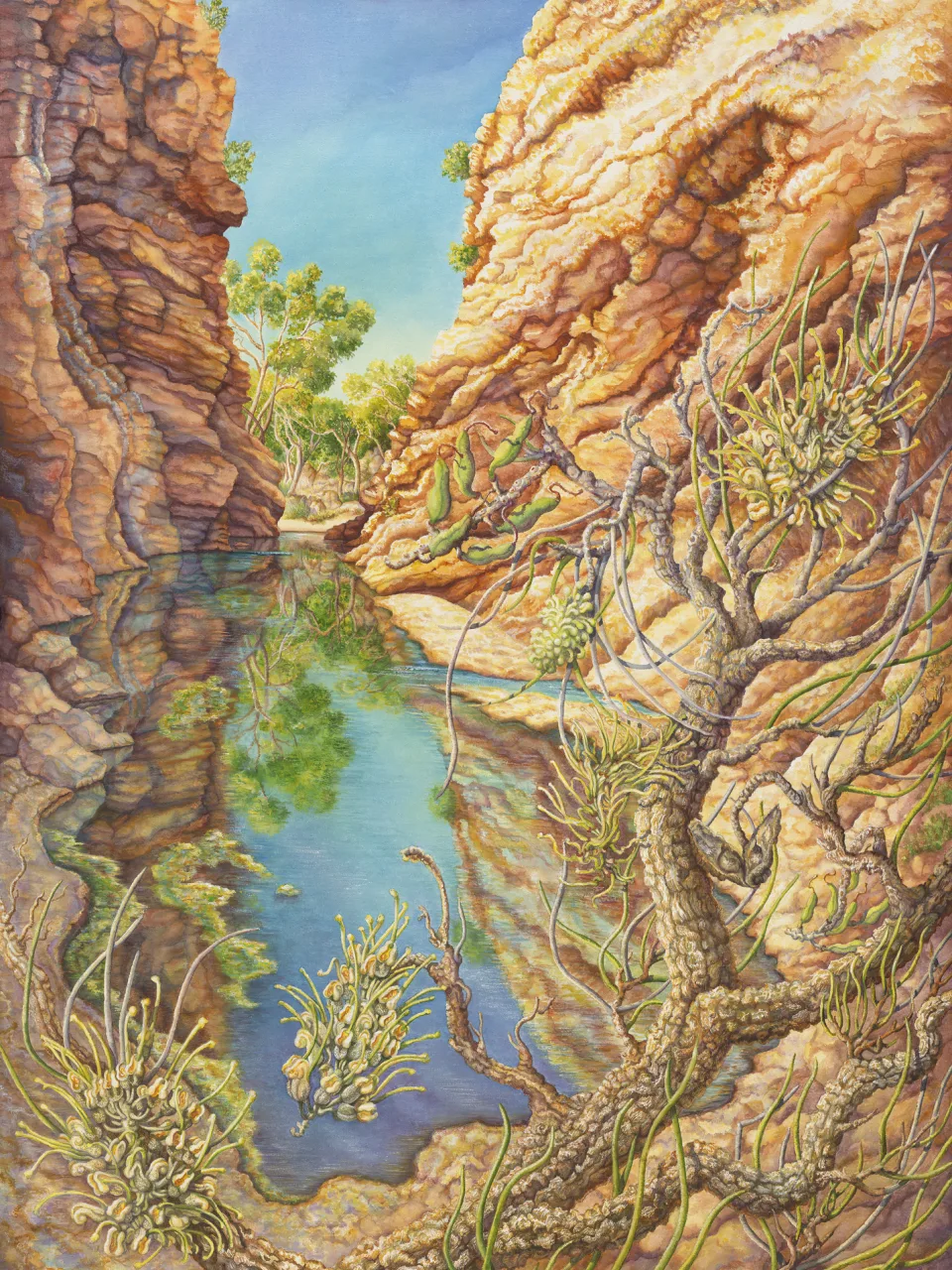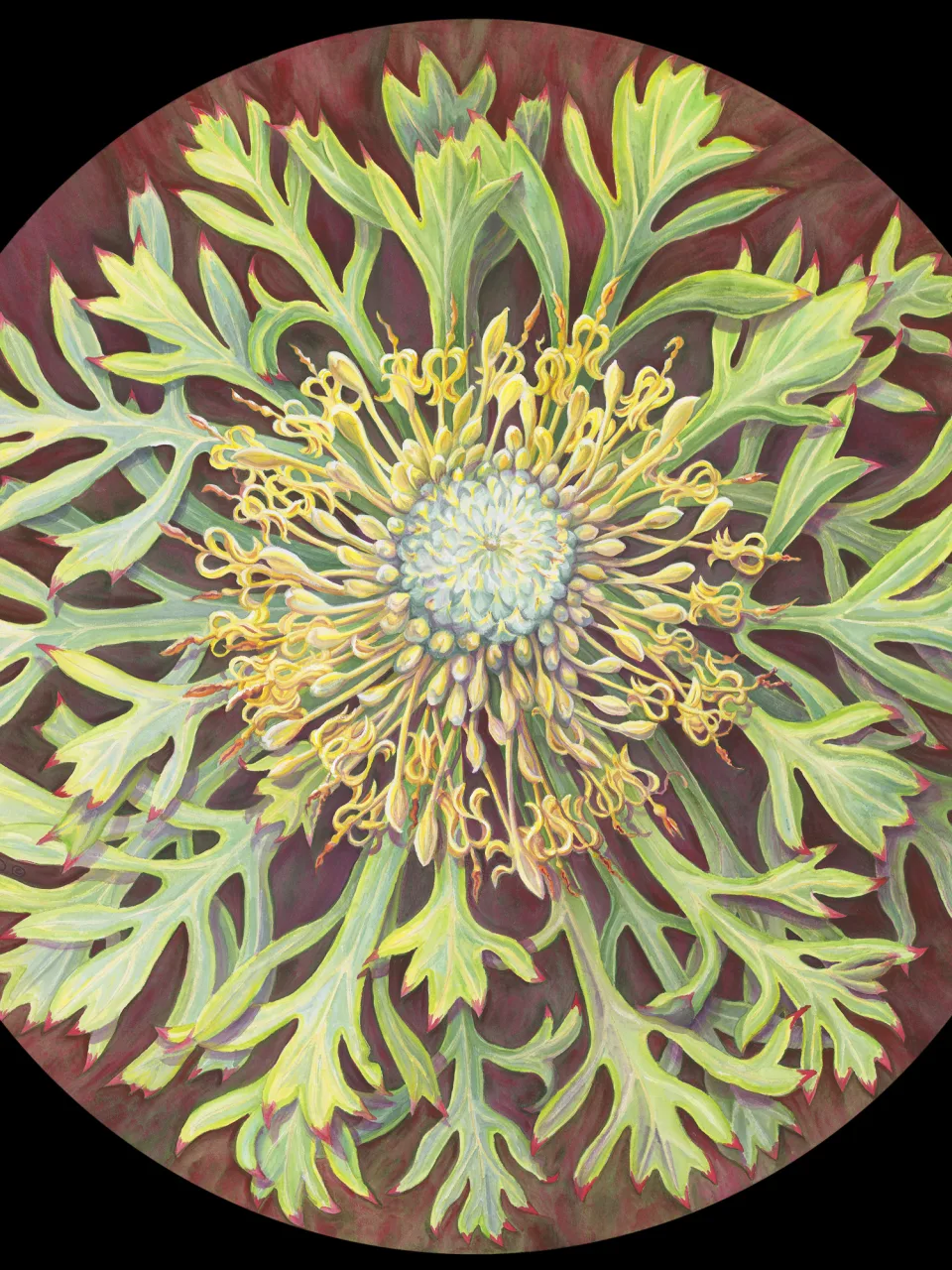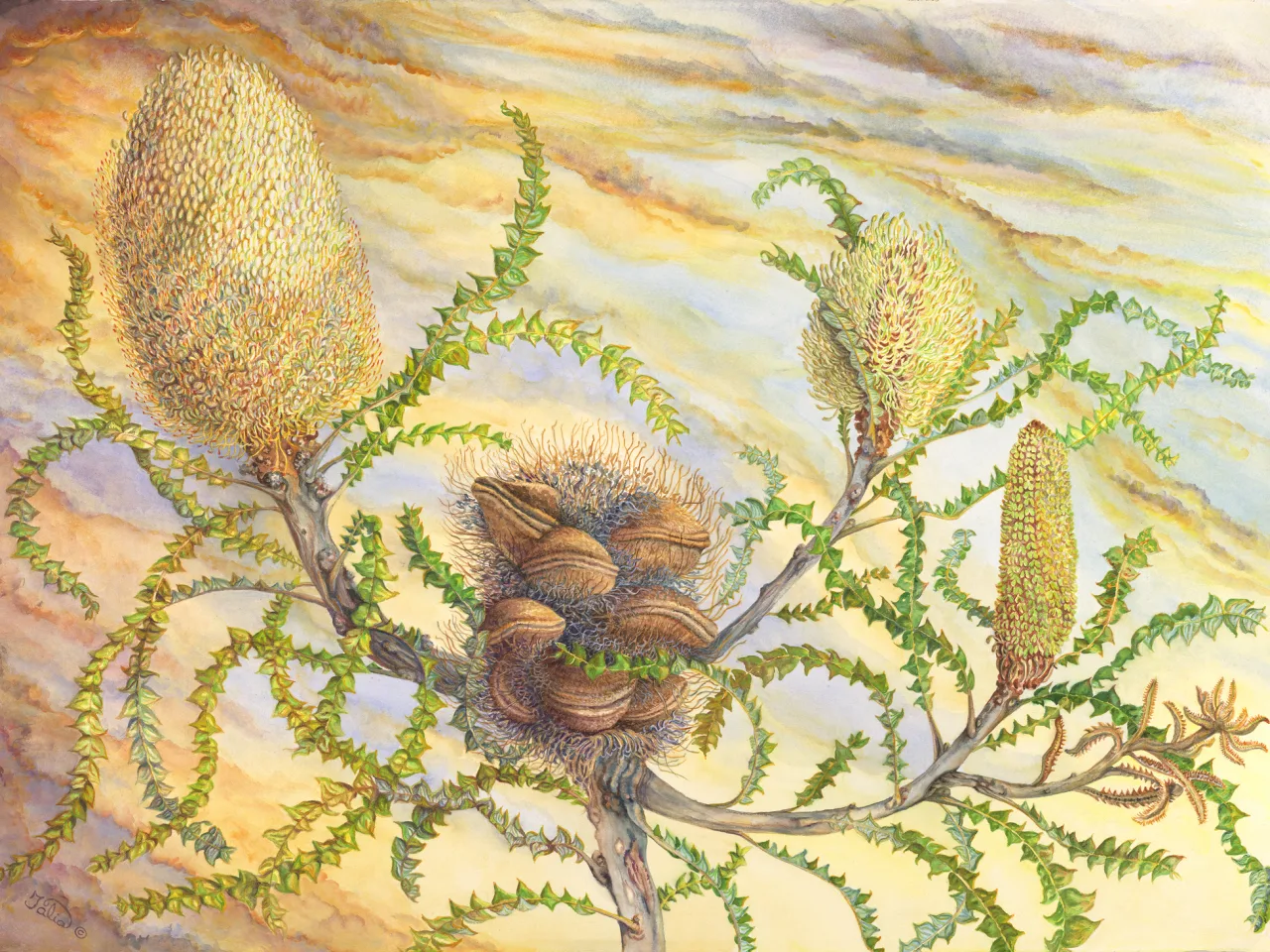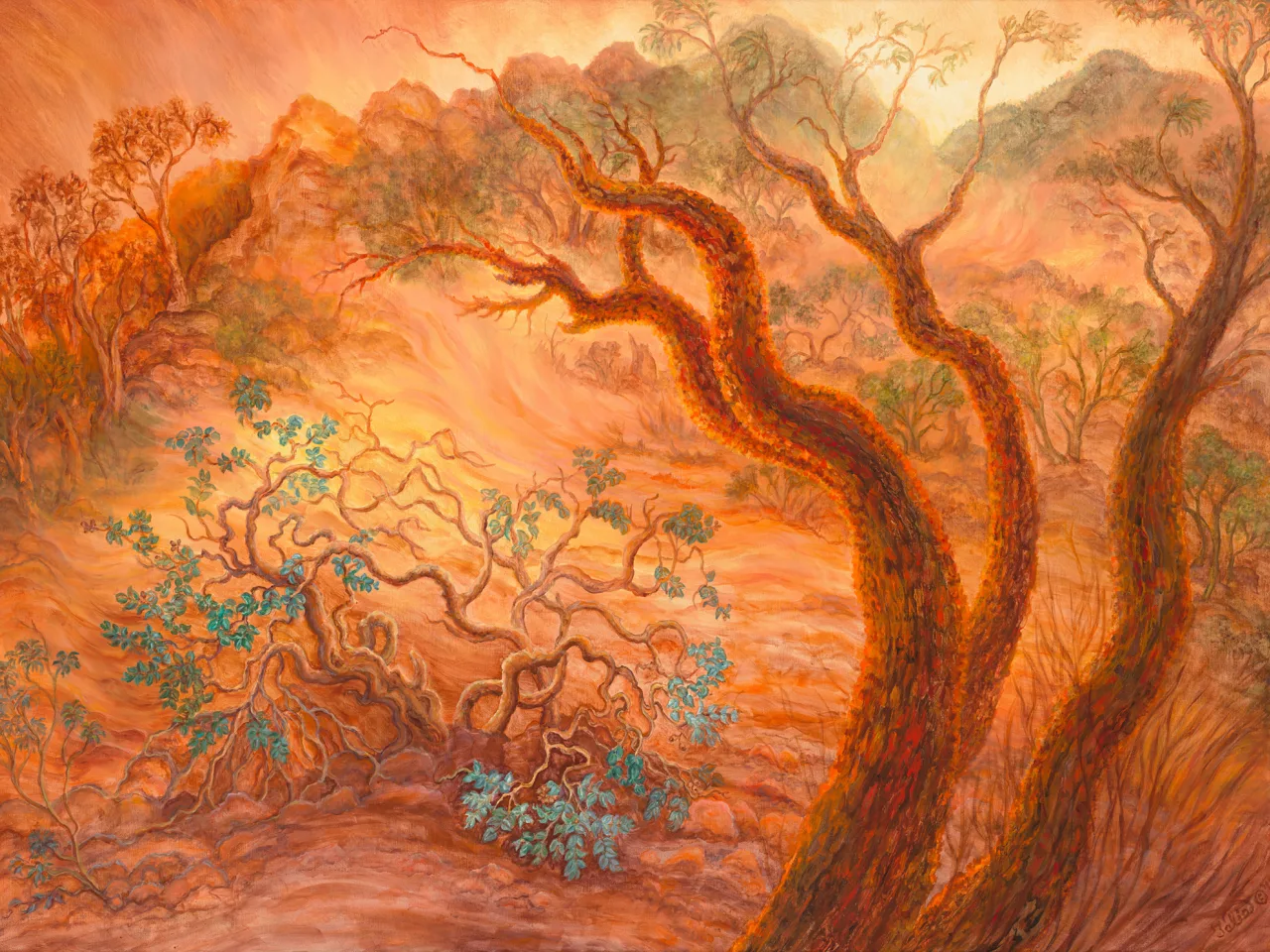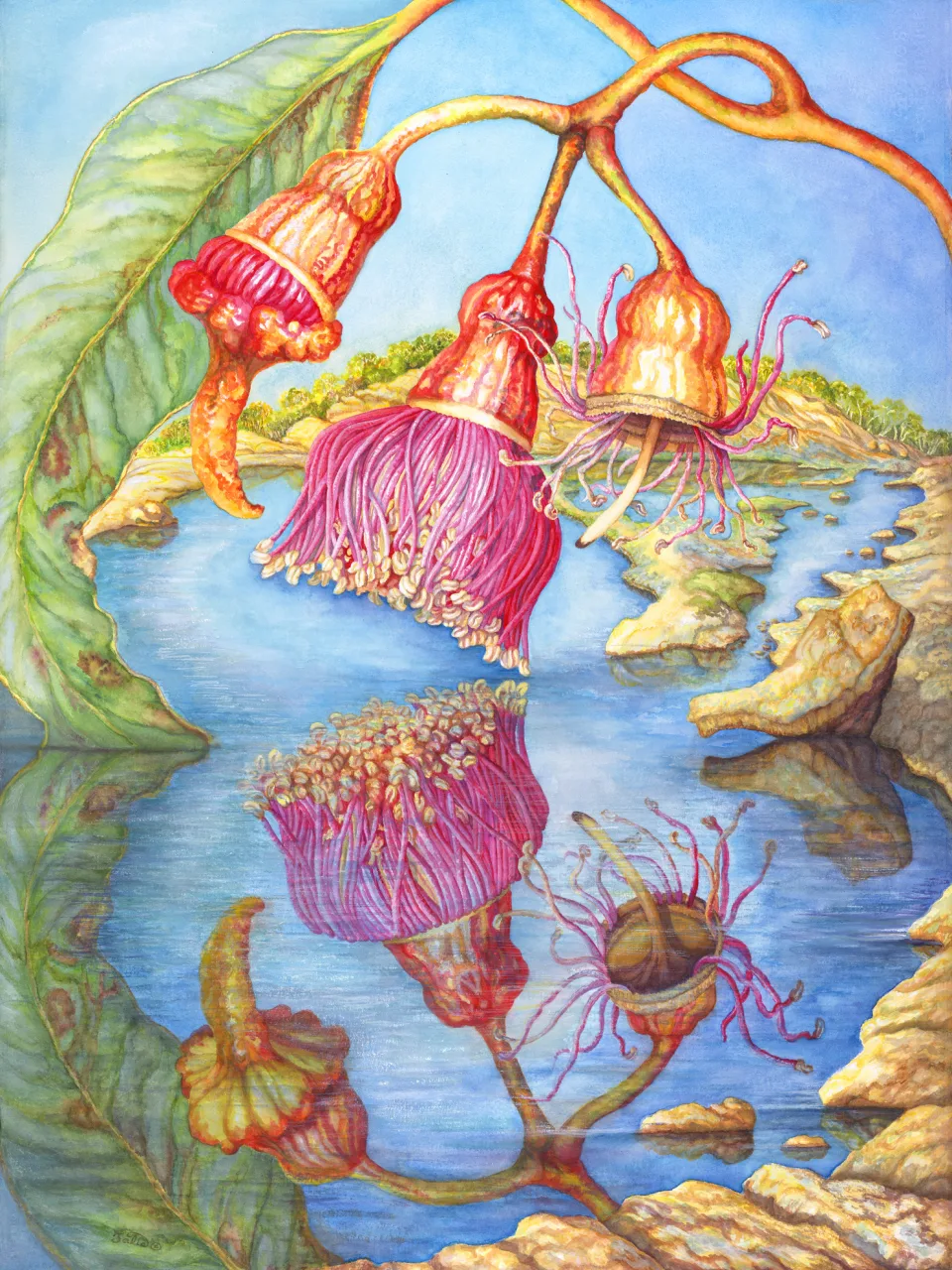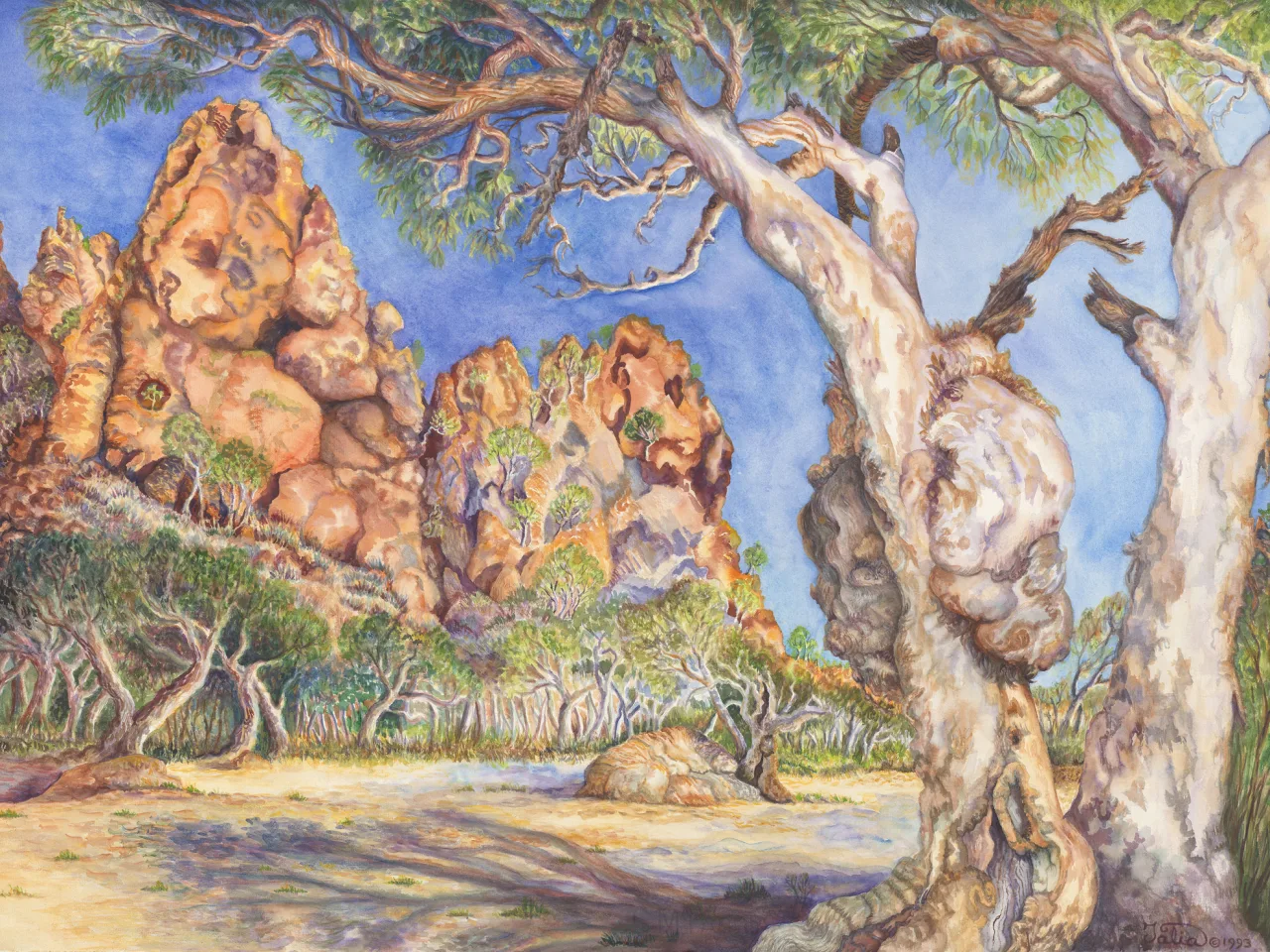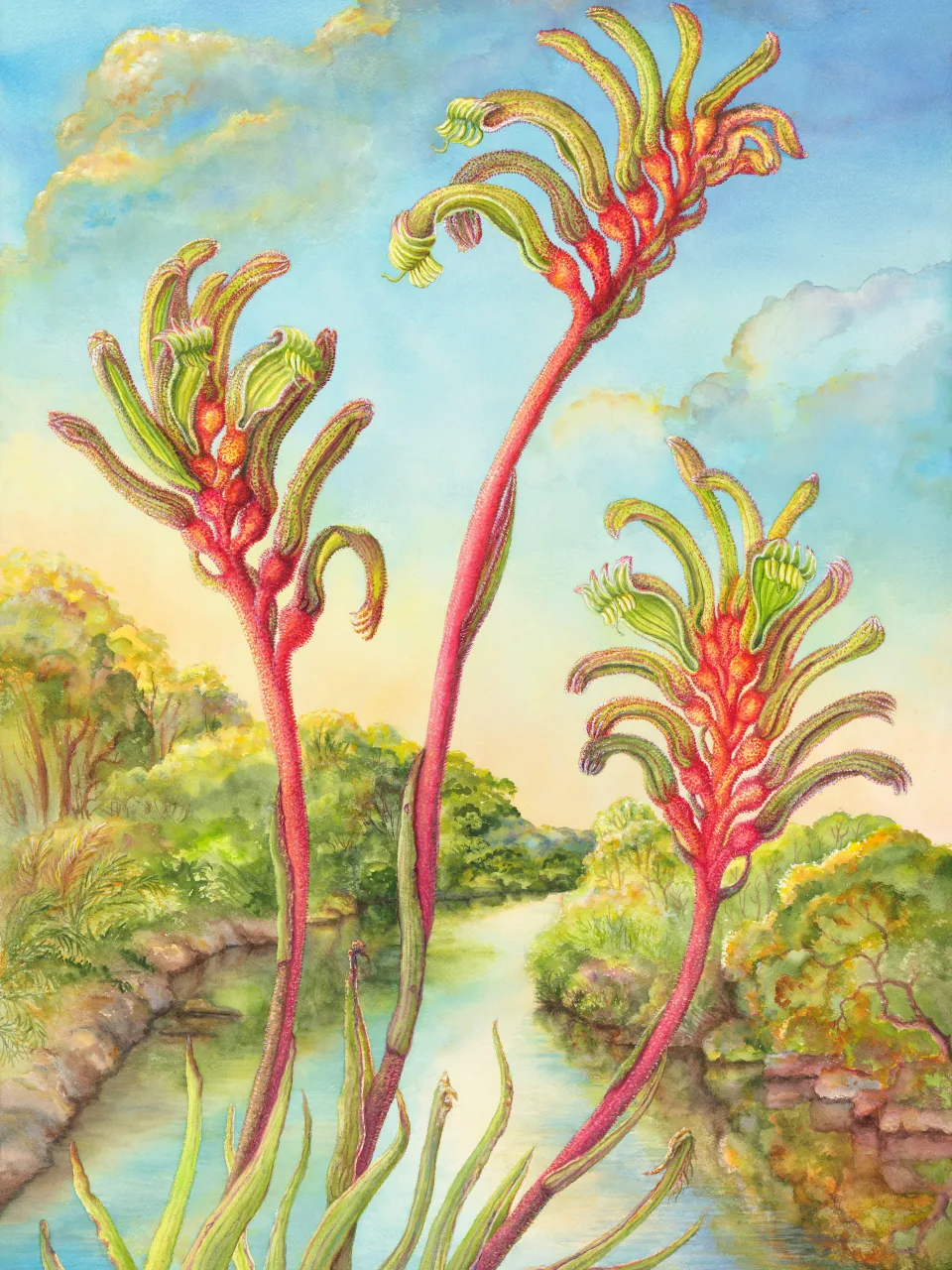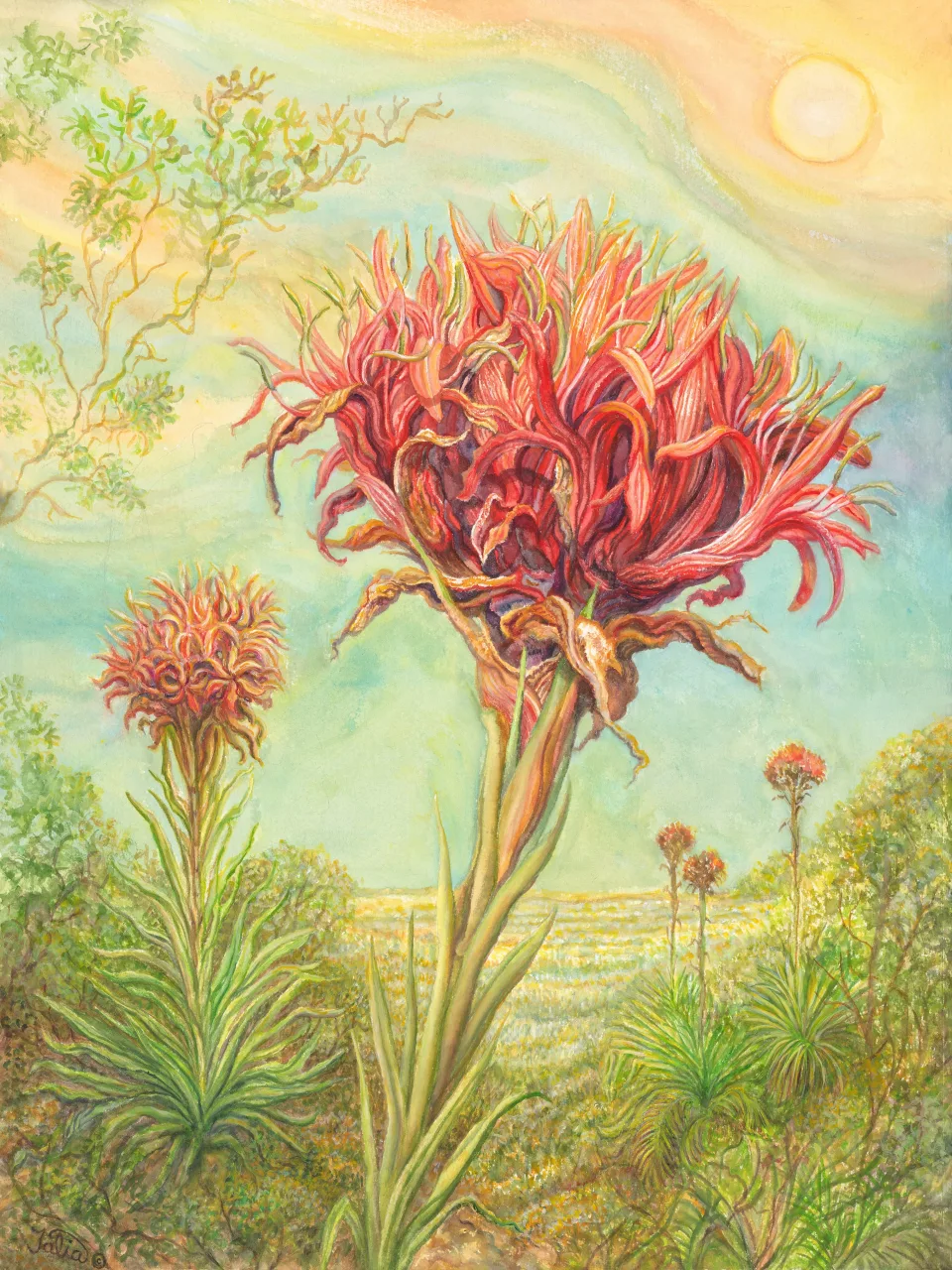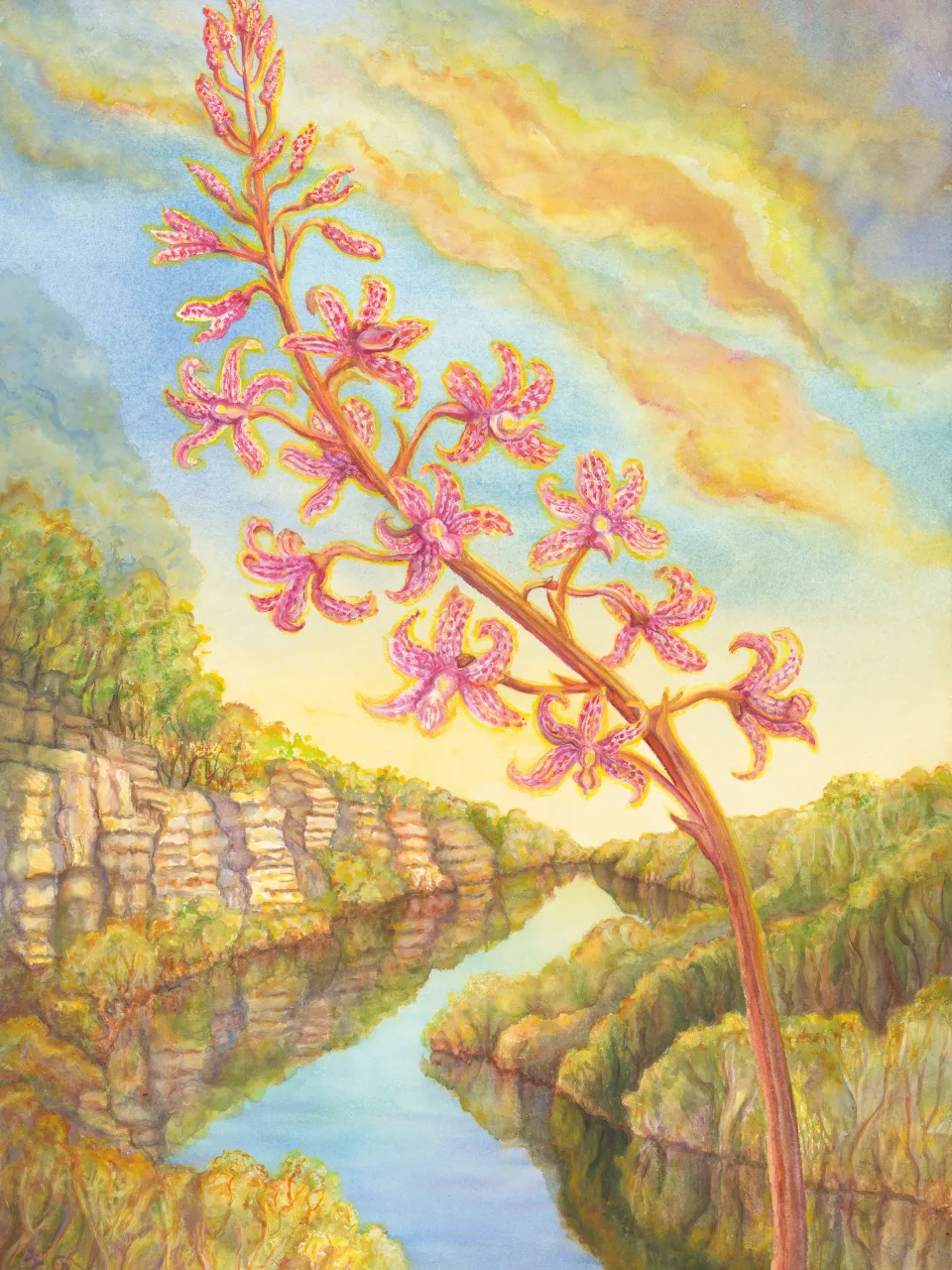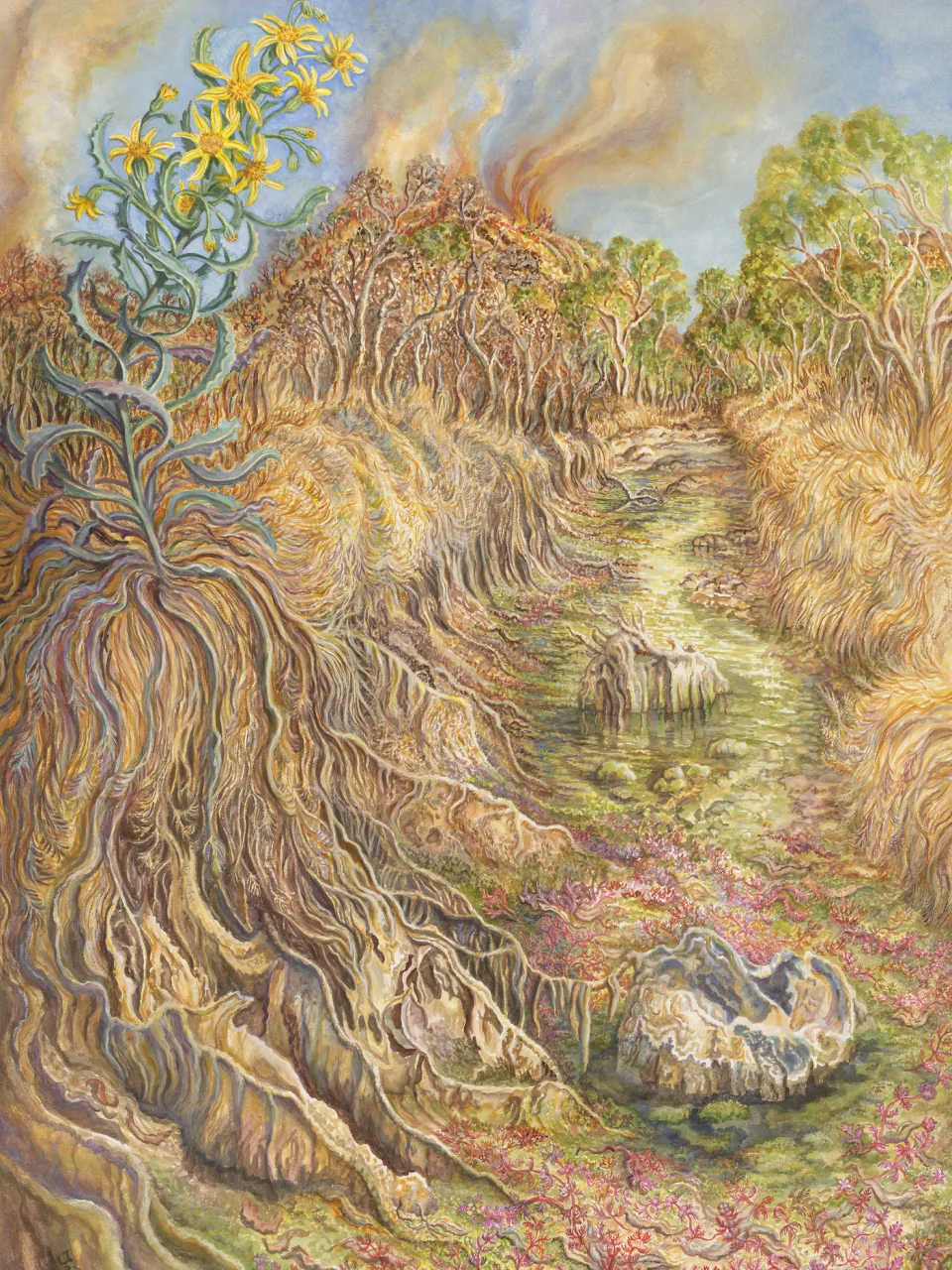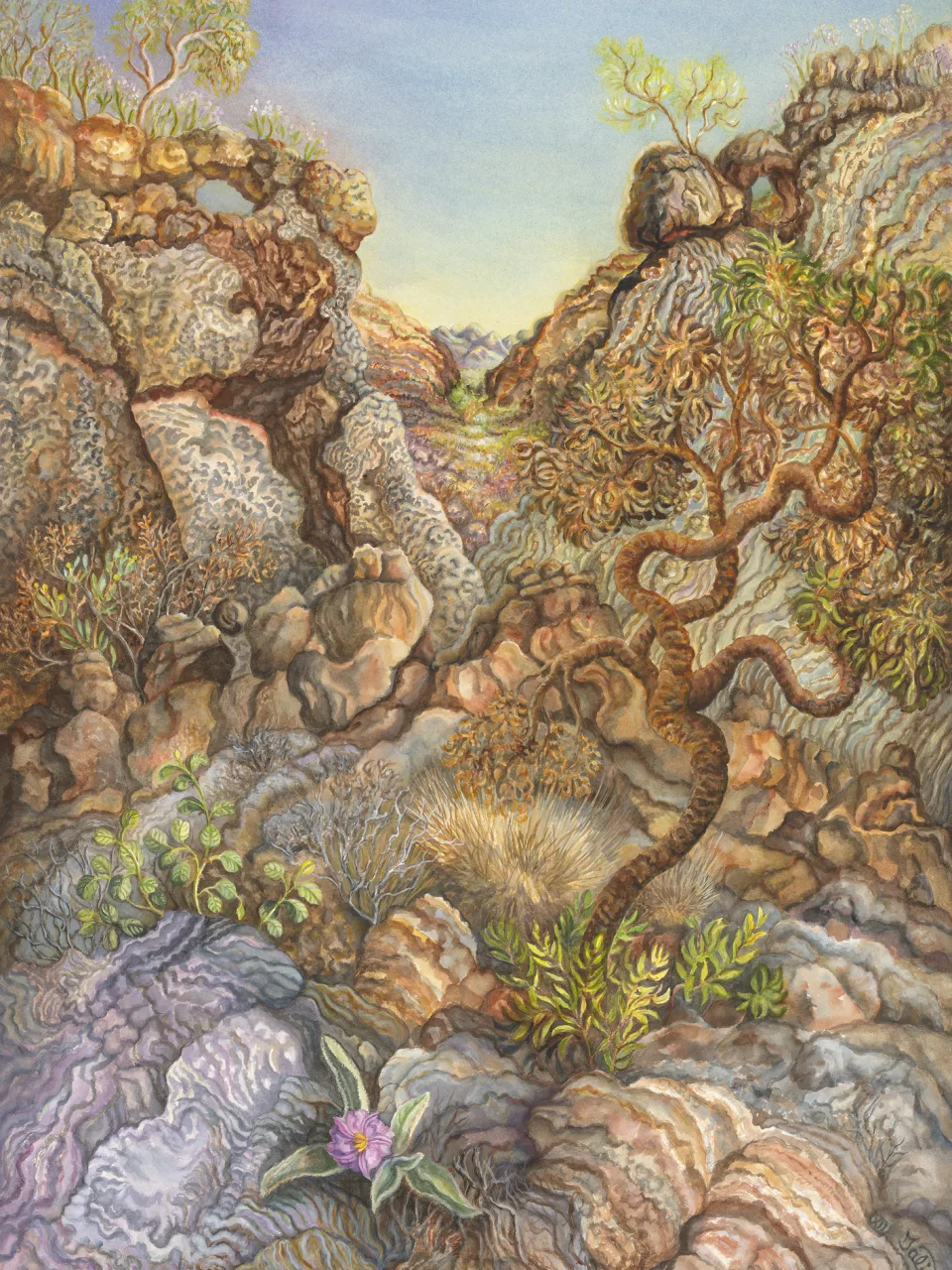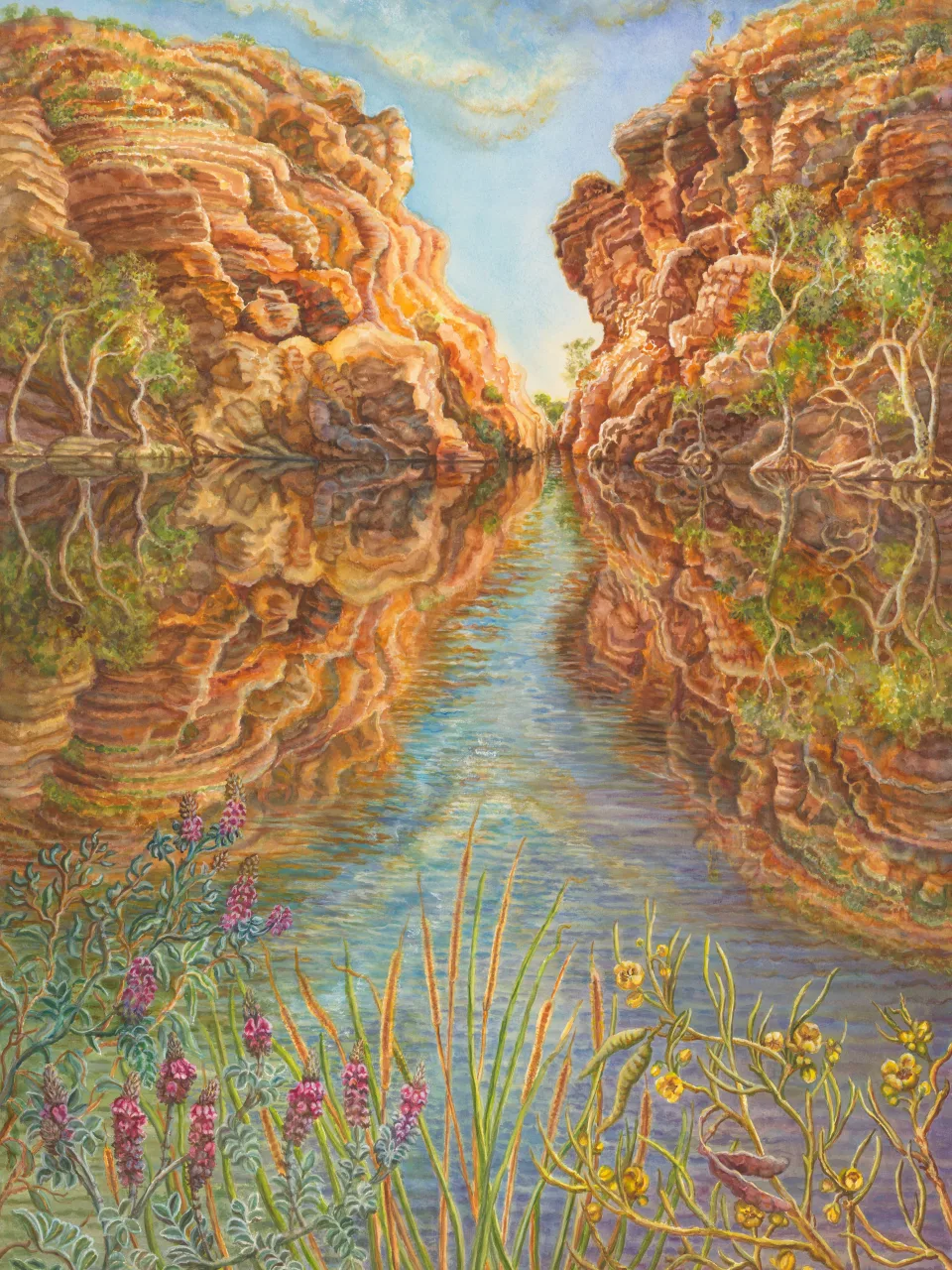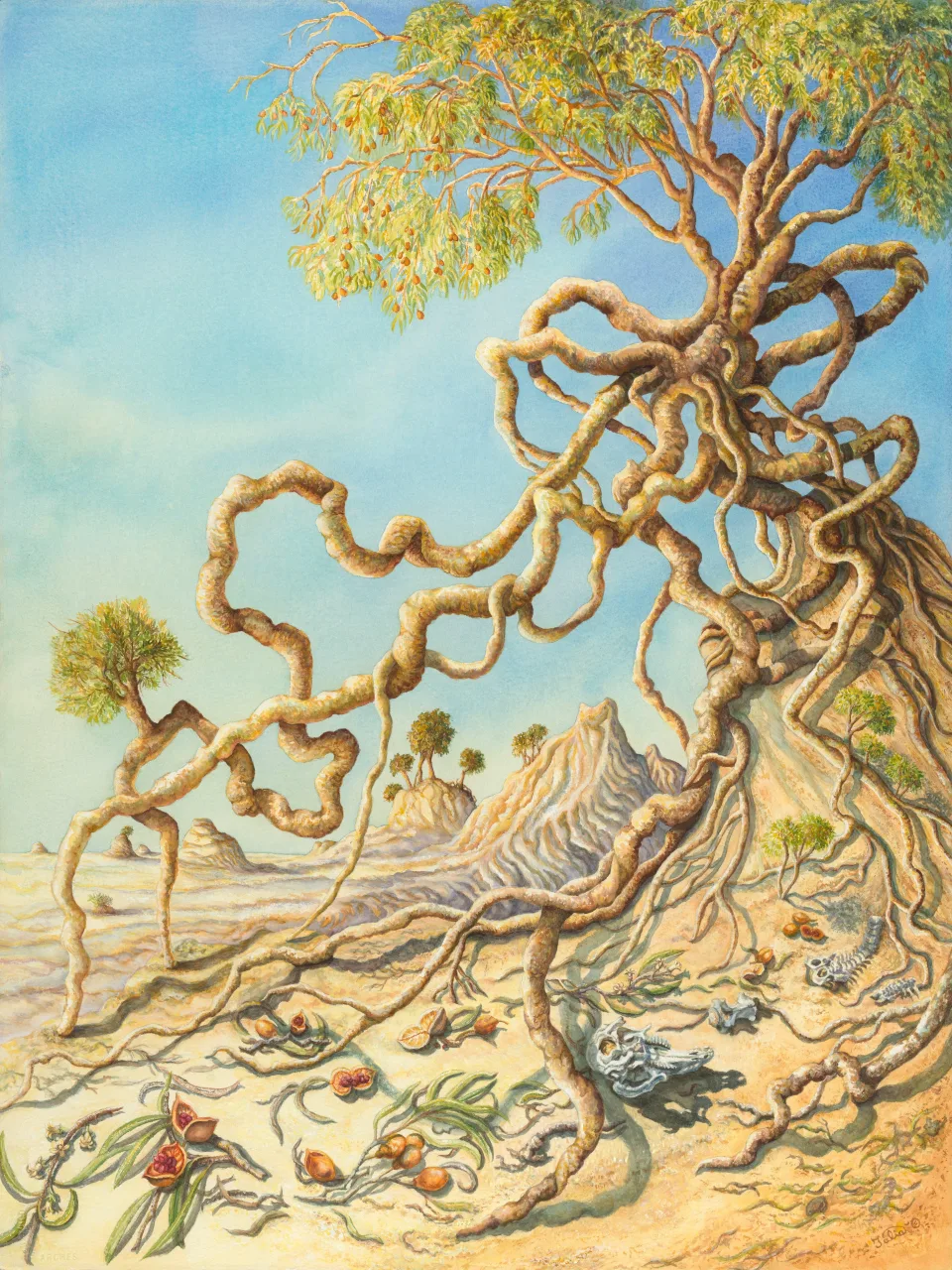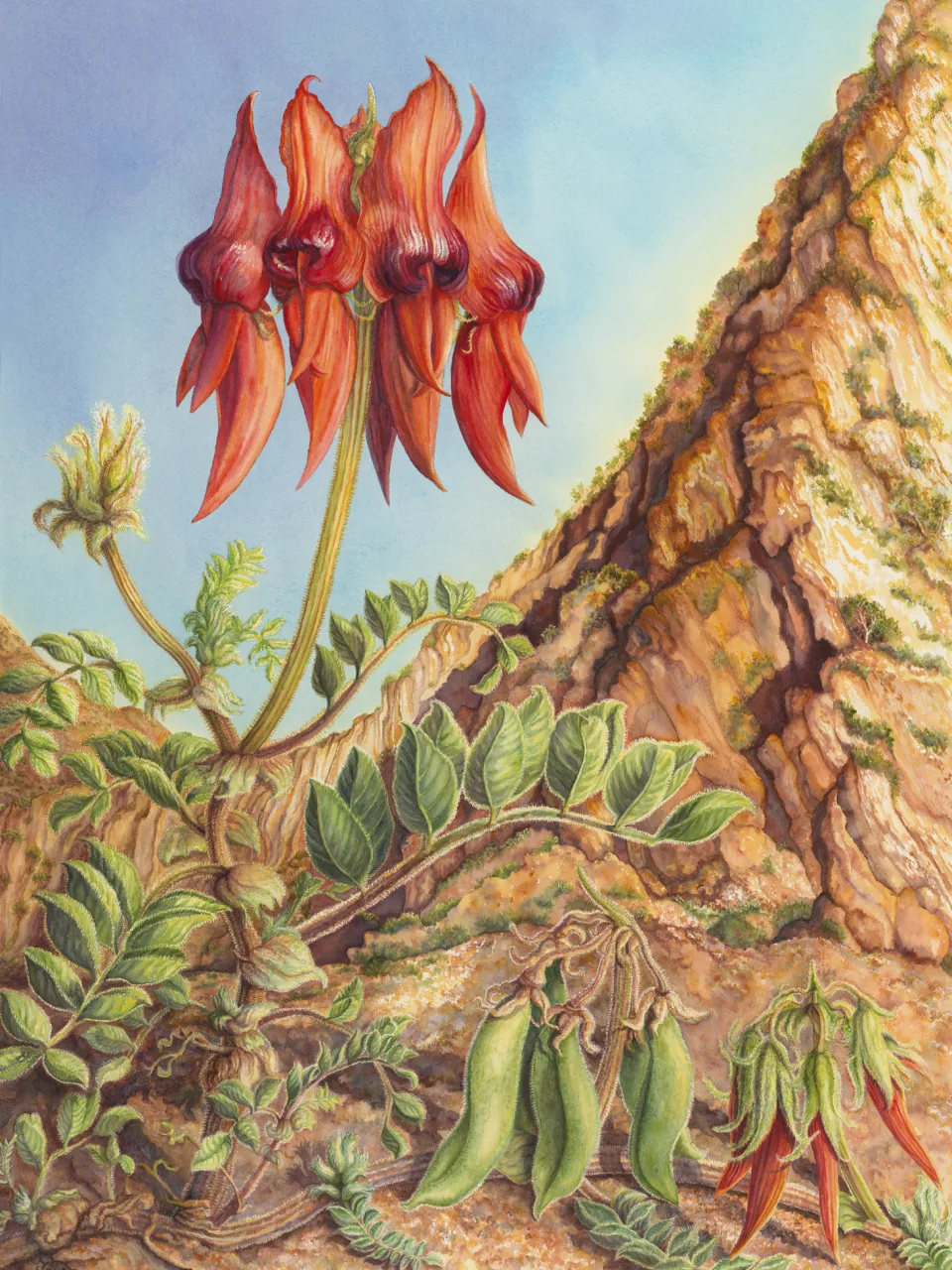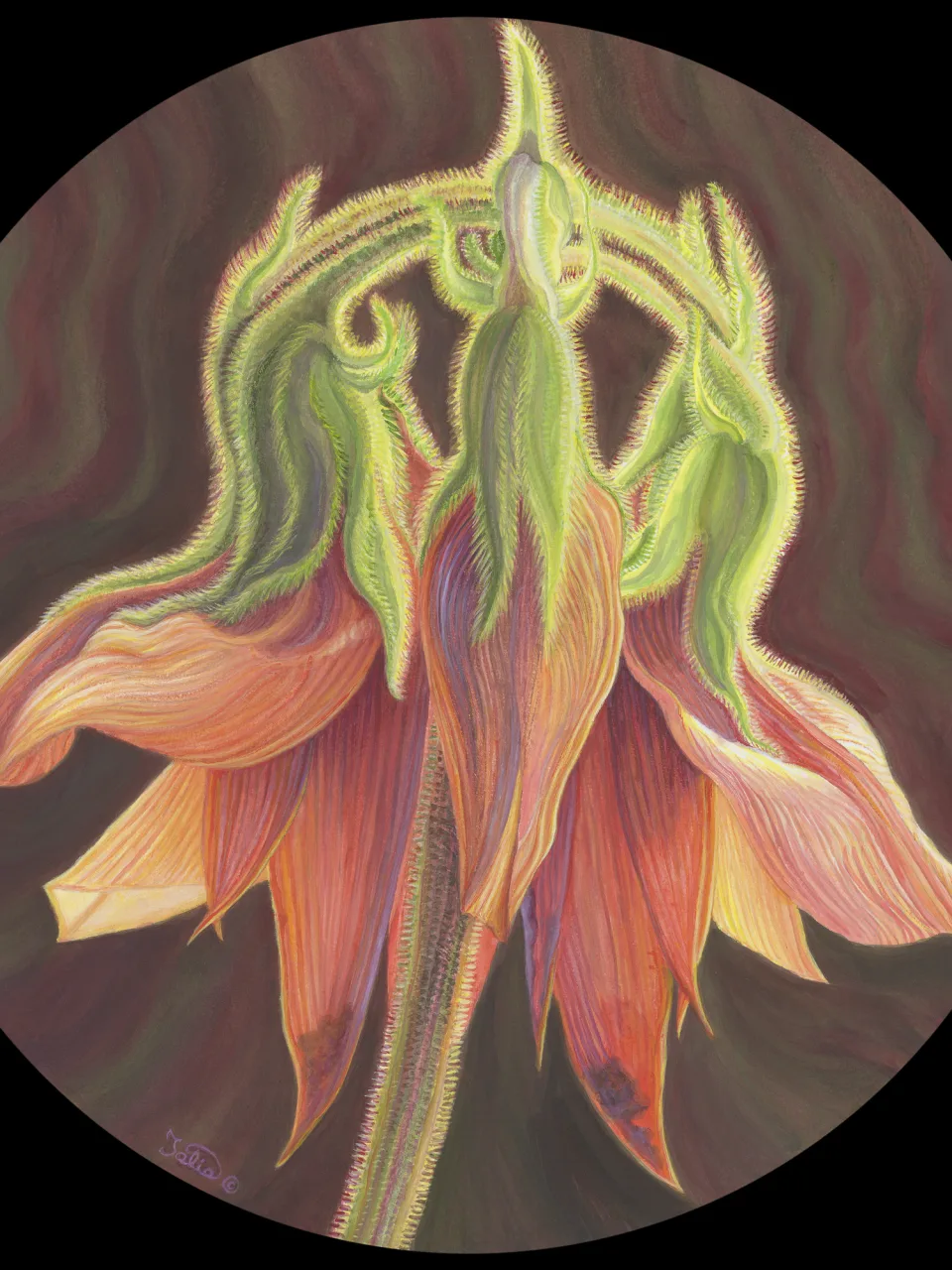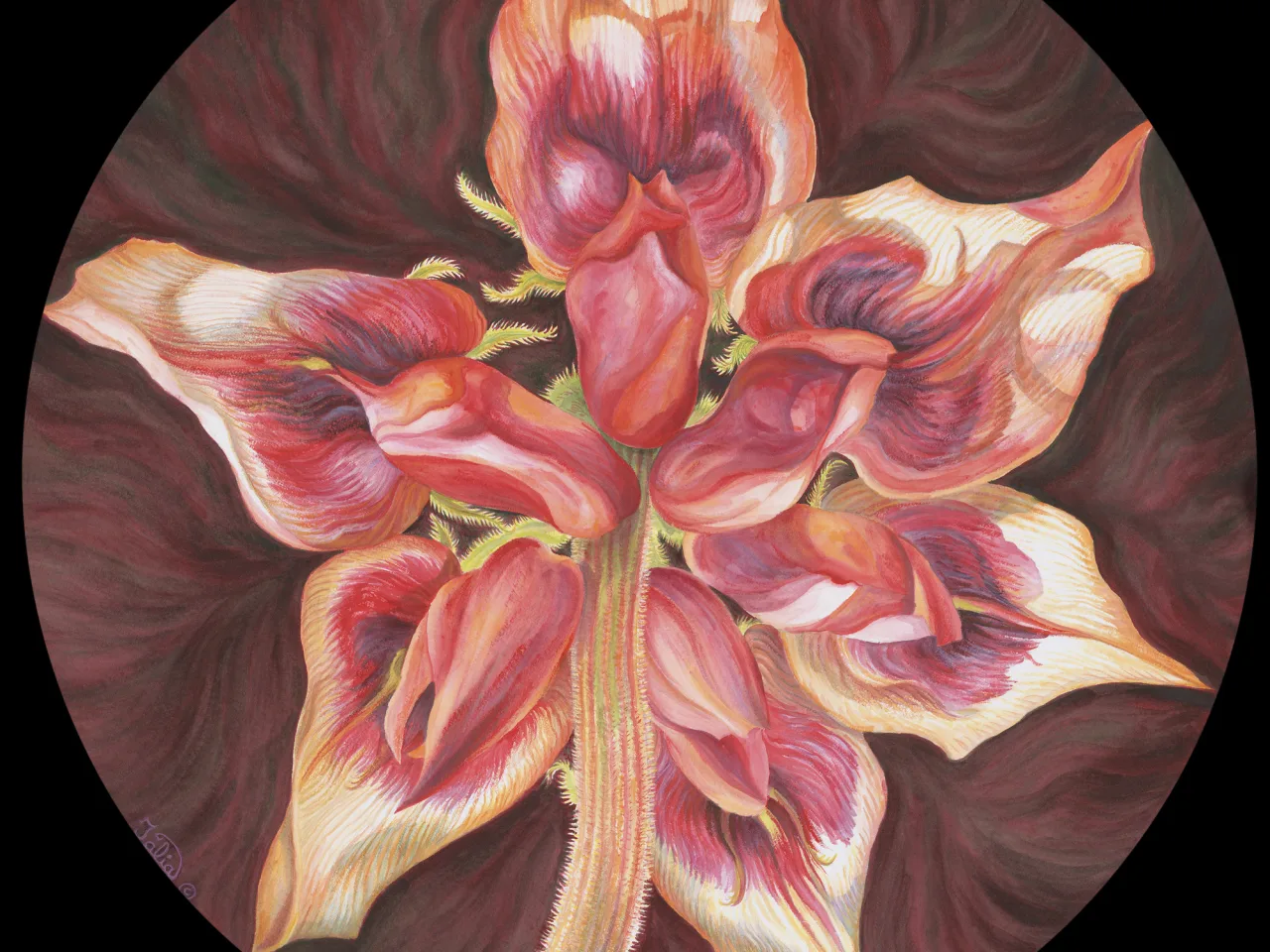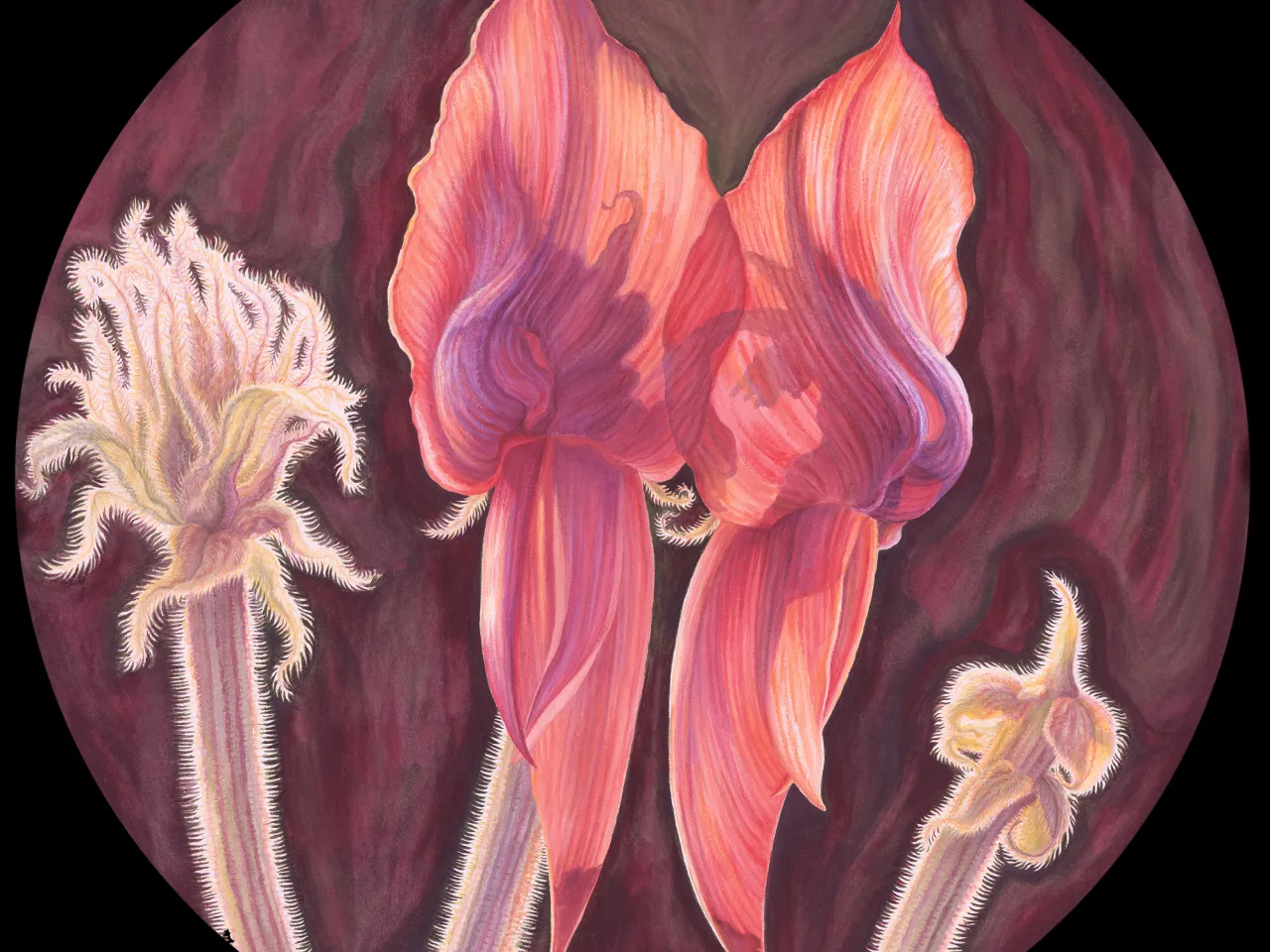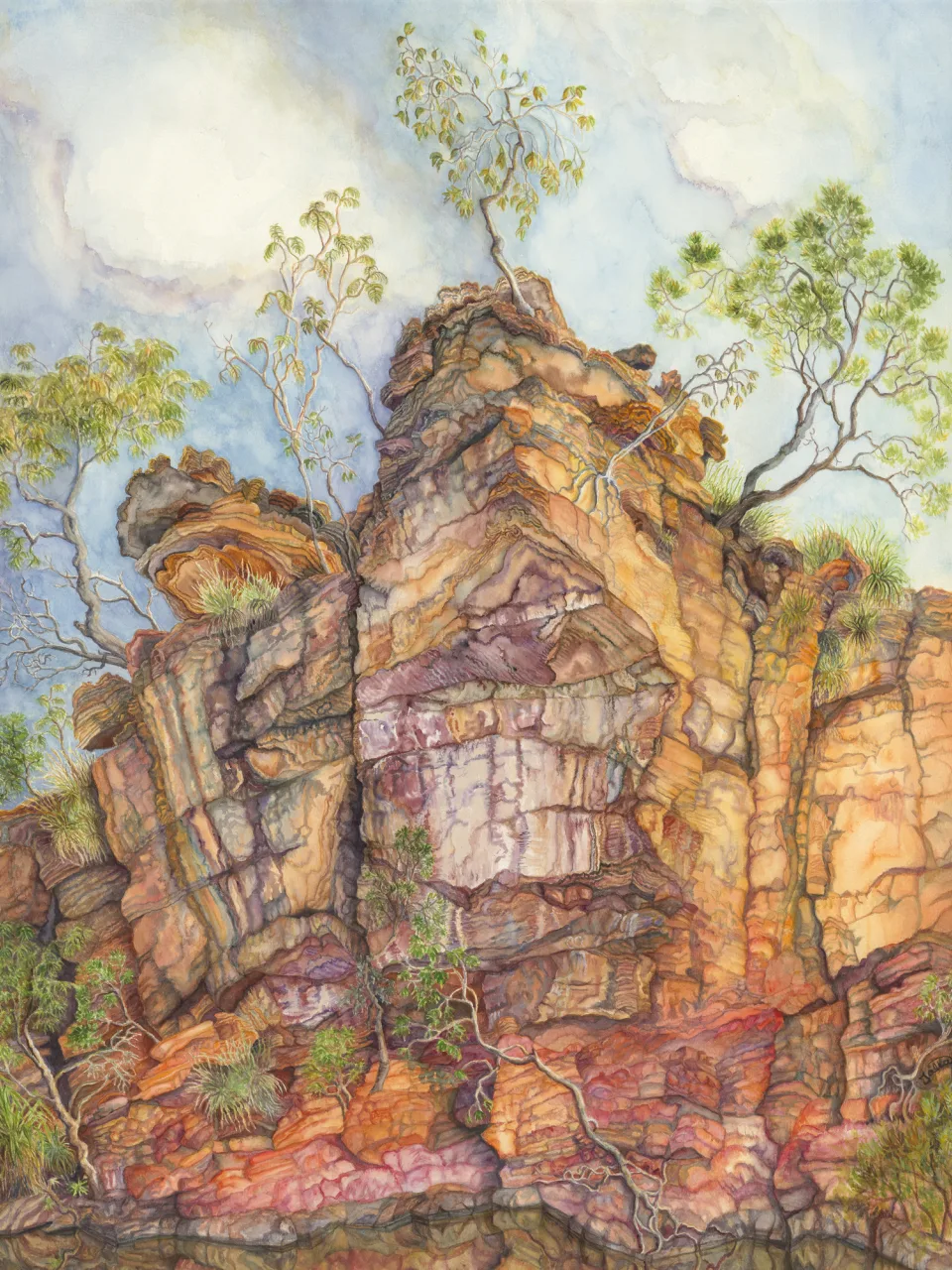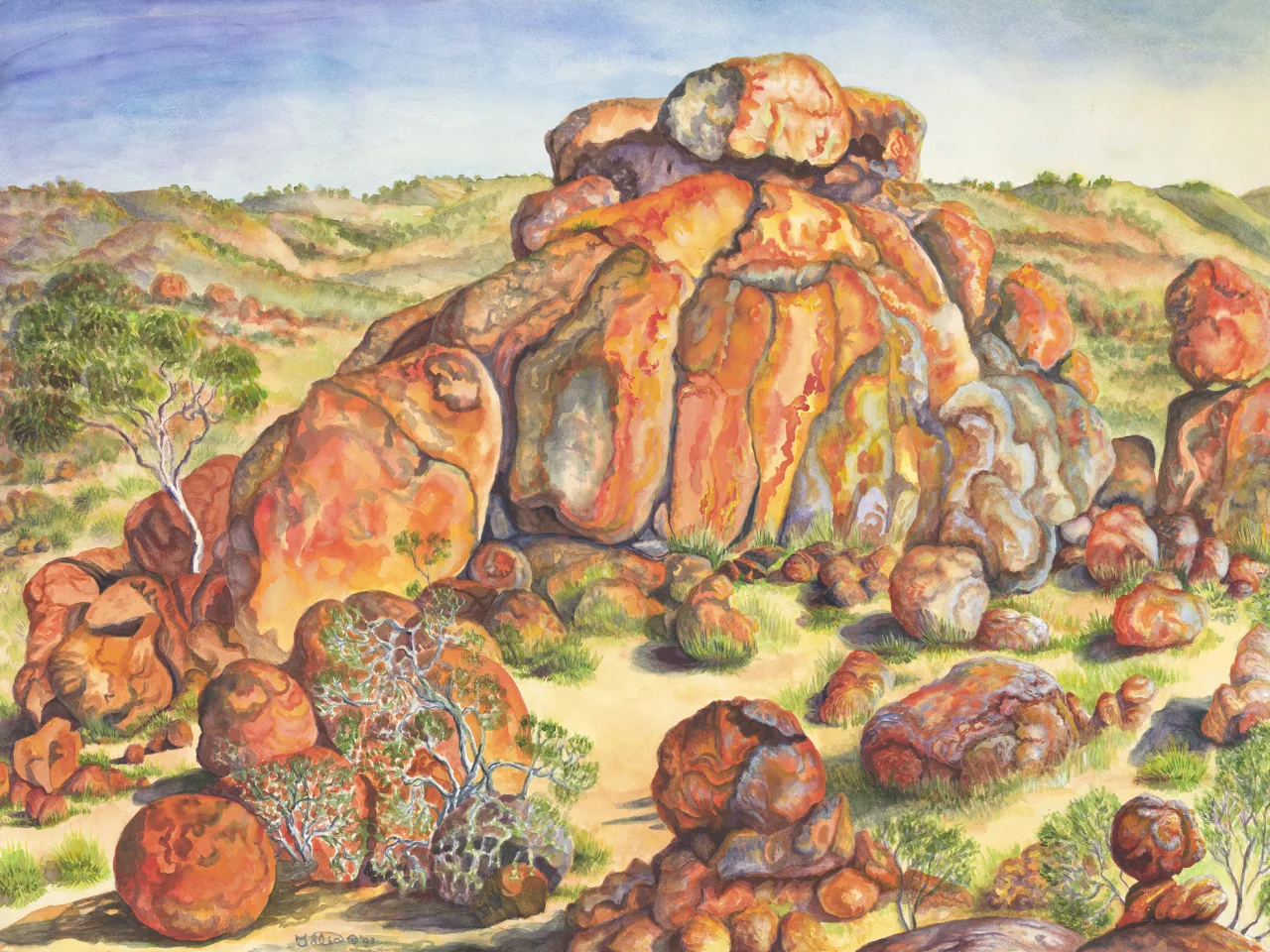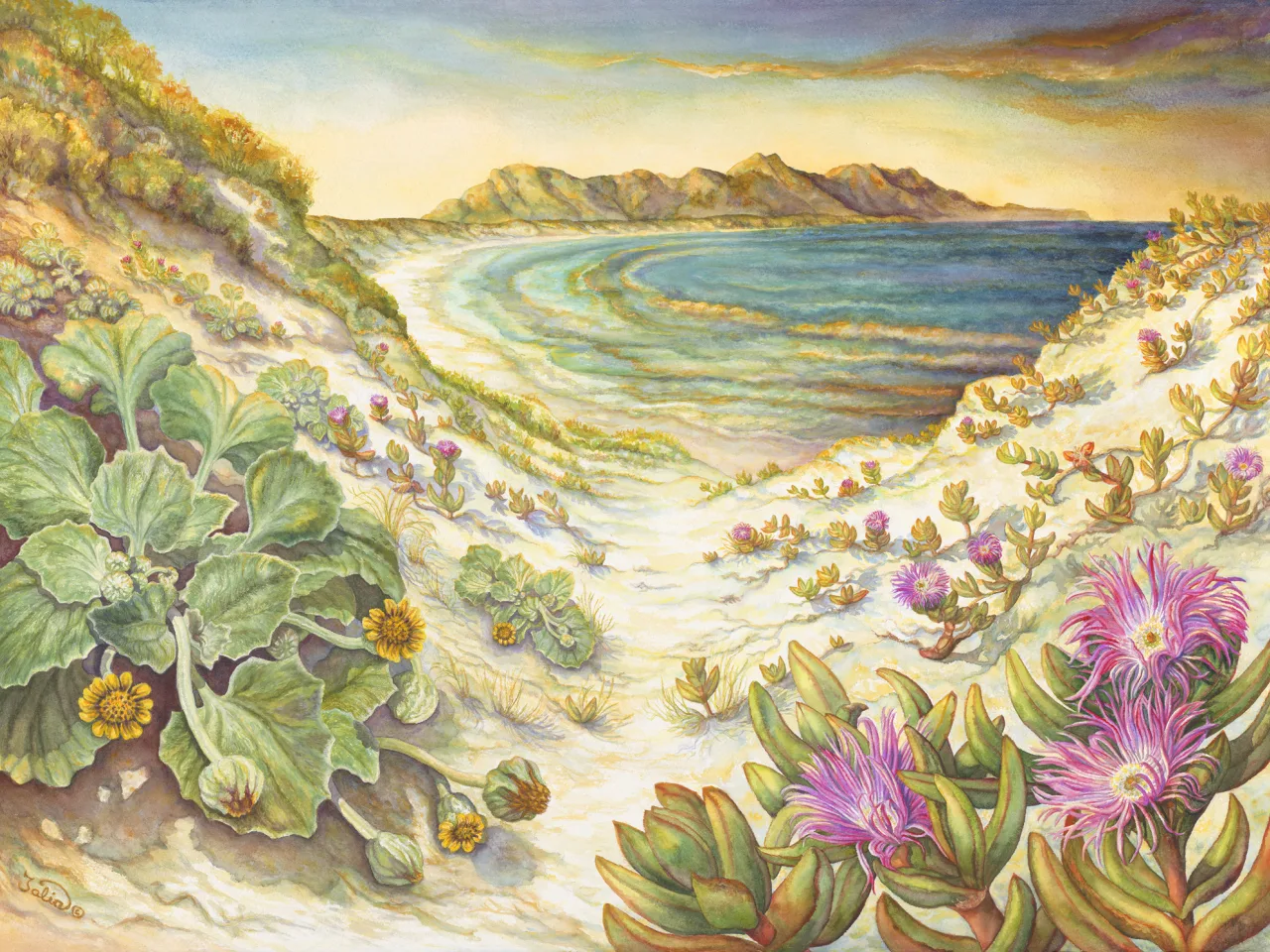Artwork 62 Desert-Loving Fuchsias at Trephina Bluff, Northern Territory
Section 31
Plants of the Arid Zone—Desert Virtuosi
Trephina Gorge Nature Park, Northern Territory, Northern Territory
- 1. Eremophila christophori (dolomite fuchsia bush)
Artwork 62
Buy a print
Limited edition giclee archival quality print on 310 gsm Ilford cotton rag (from an original work in watercolour on watercolour paper, 49 cm high x 73 cm wide)
from the artist
While camped at Trephina Gorge, I arose at 5 a.m. to climb the “Panorama” track and photograph the Bluff at sunrise—three times, as clouds sometimes obscured the Bluff! Colours changed from red to gold to light golden-brown. The eremophilas were also photographed near the top of the track. This became a very complex painting, with several revisions, as I sought to capture the changing atmosphere of red-gold cliffs and “electric lilac” flower colours with their light green and red-gold leaves echoing the colours of the cliffs. Luckily this was a solo trip and I could turn the campervan into an art studio, sleeping wherever I could fit! This artwork was completed largely on location.
The eremophilas belong to the Gondwanan family Myoporaceae. The family includes two genera, Myoporum (the “boobiallas”), and Eremophila (the name means “desert lover”, and one common name is “desert fuchsia” (Urban, 1990, pp. 176–177)). This genus has a Gondwanan distribution, with its greatest centre of diversity in Australia (White, 1986, p. 216). It has about 180 species endemic to Australia, and can be found in all states except Tasmania. The family is near-endemic to Australia, with few species found elsewhere (Crisp et al., 1999, p. 335).
